From passion fruit to dead man’s fruit (yes, that’s a real fruit), we are covering 35 of the strangest fruits in this comprehensive guide to strange fruits.
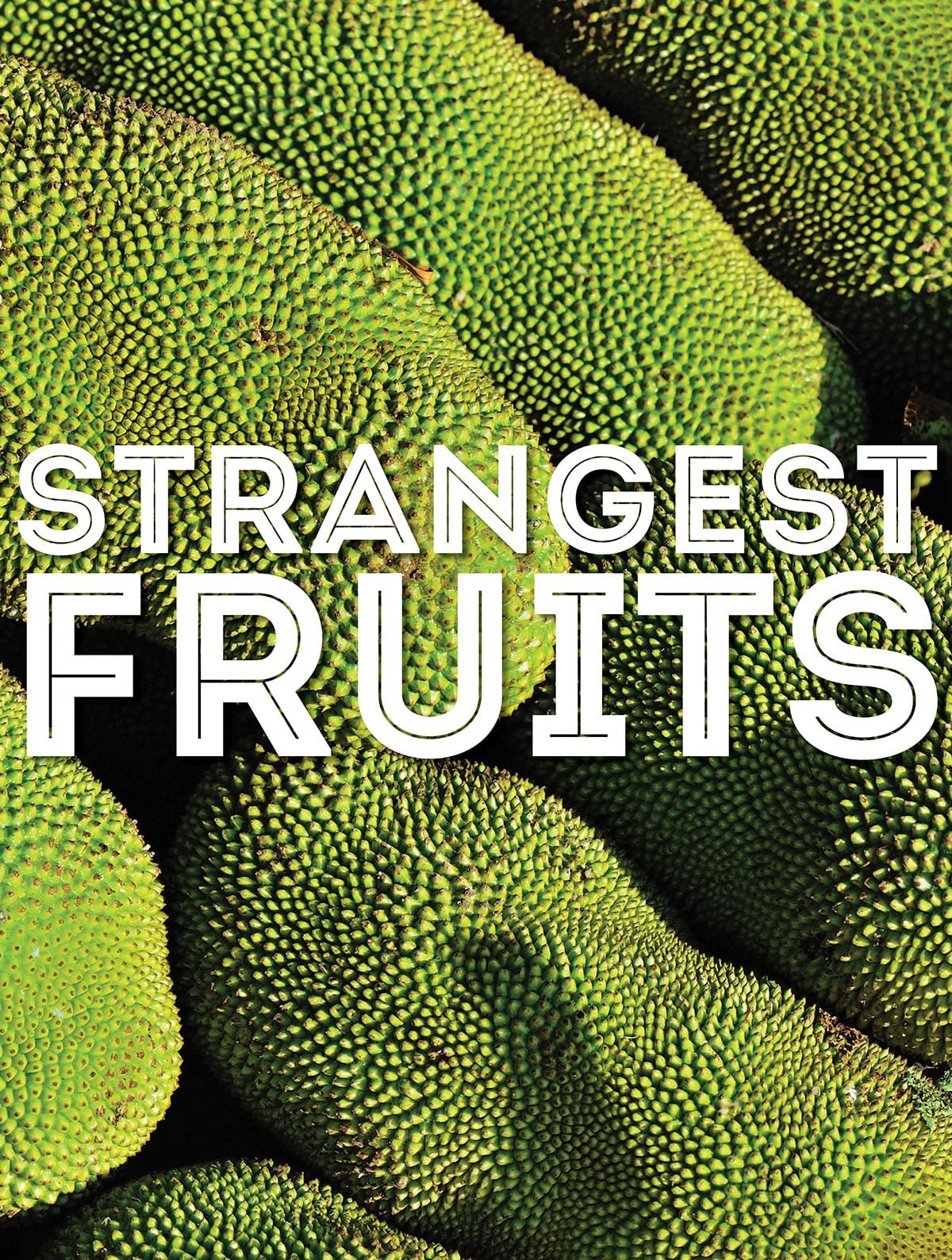
#35 PASSION FRUIT
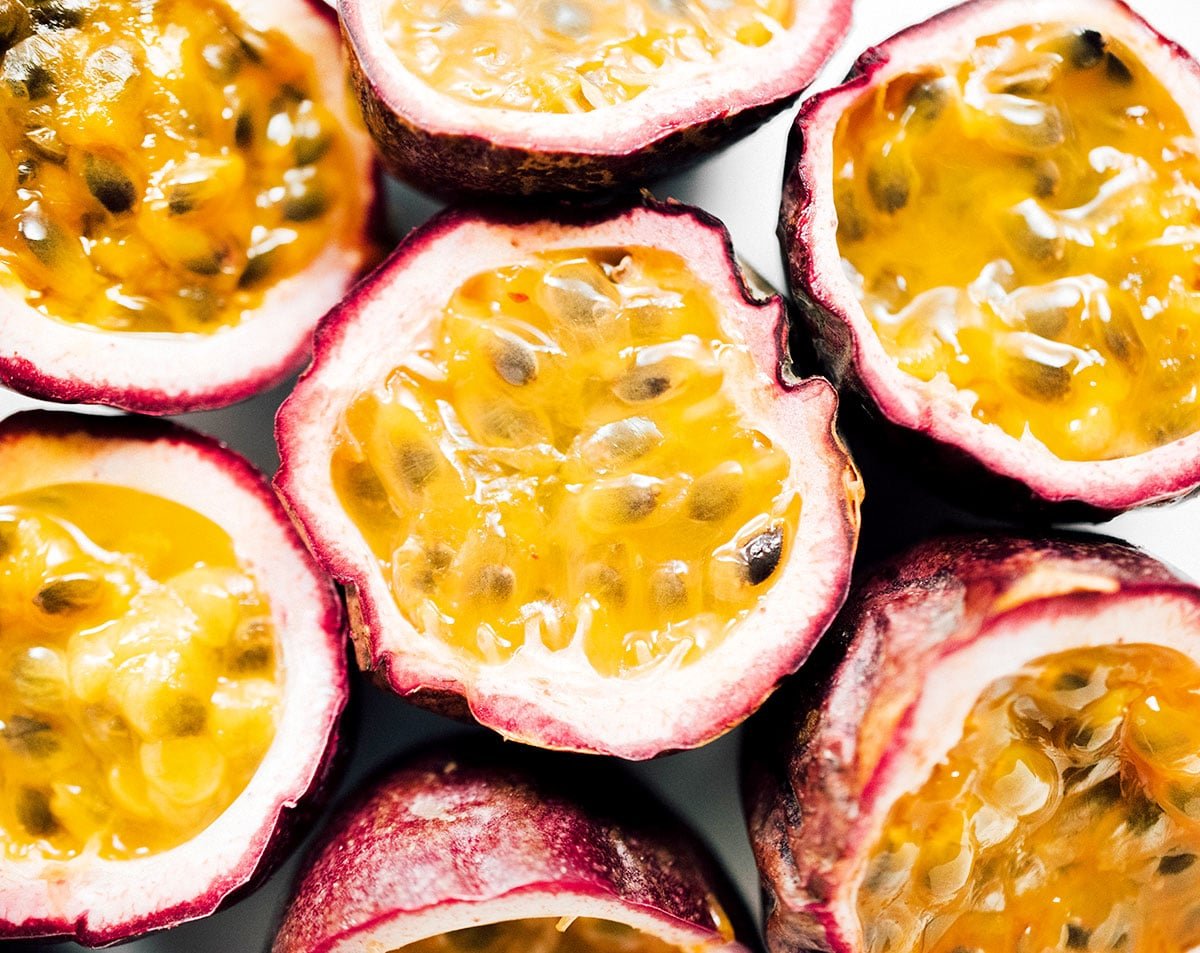
The Passion fruit is native to South America and isn’t really an unusual fruit. It looks normal enough on the outside, but the runny pulp is odd at best. The pulp is, however, tangy, and makes wonderful desserts and drinks like Passion Fruit Juice, or a frosty Passion Fruit Smoothie. There are several types of passion fruit including purple passion fruit, yellow passion fruit, sweet granadilla, and giant granadilla.
Don’t worry, our list gets stranger than just this.
#34 VELVET TAMARIND
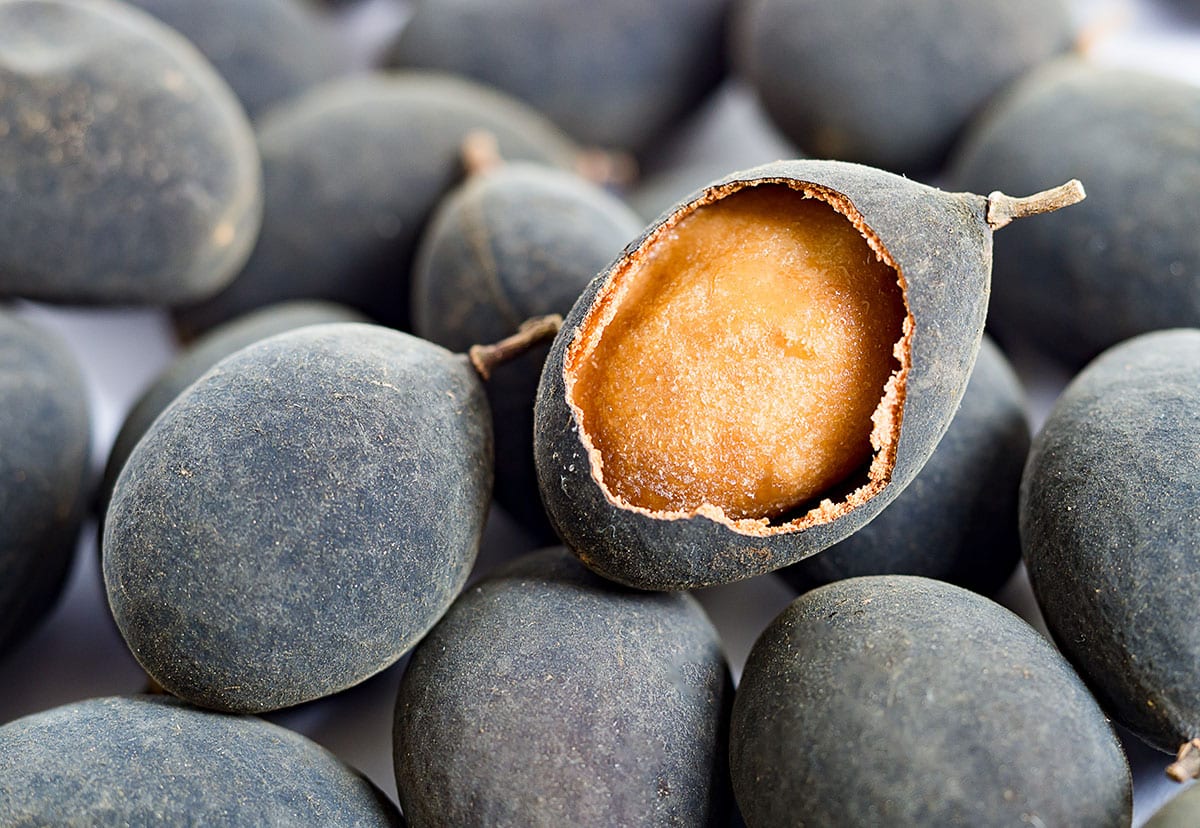
The velvet tamarind is a grape-sized fruit with a hard brown shell. It grows in the forests of Western Africa. The pulp is eaten raw, made into beverages, and used medicinally.
#33 RAMBUTAN
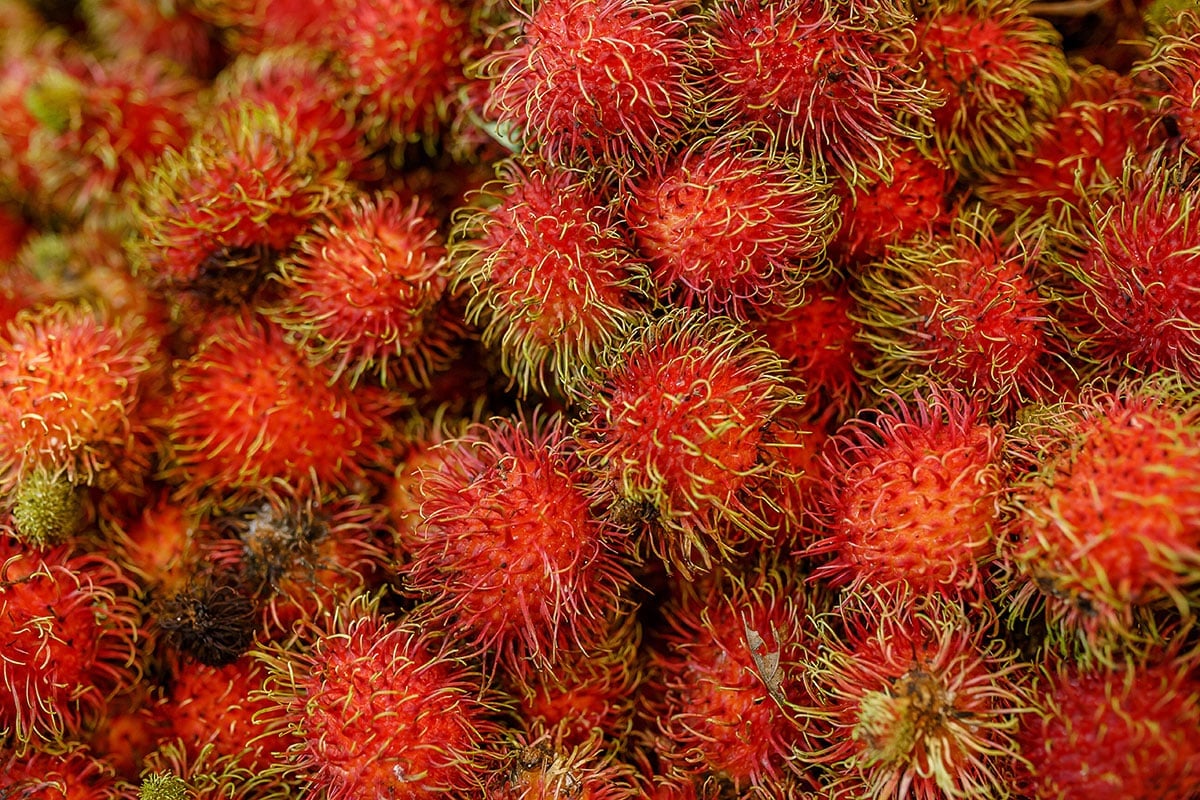
The rambutan is a small red fruit with a spiky skin, but a sweet & juicy white pulp that tastes sort of like grapes. This odd duck is native to SE Asia and is often used in desserts and drinks.
#32 JACKFRUIT
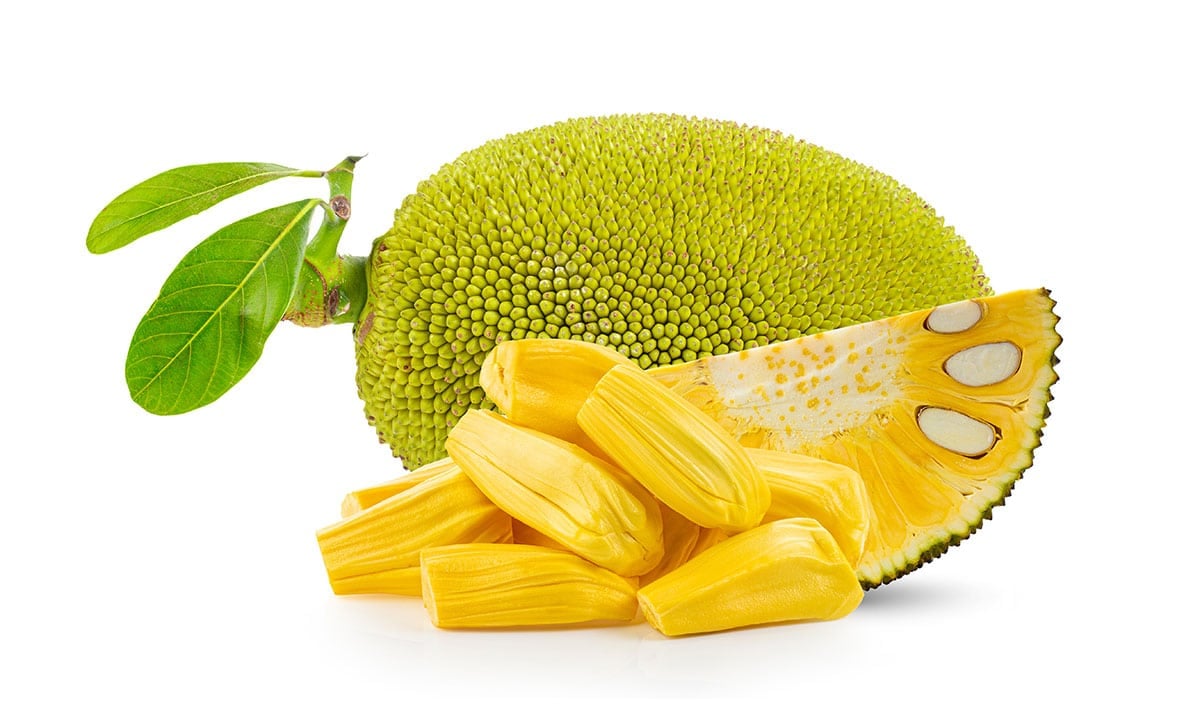
The jackfruit is a huge, spiky fruit that can weigh as much as 80 pounds! The fruit is sweet with a texture similar to pulled pork, and jackfruit is often used as a meat substitute in vegan and vegetarian dishes. Try these Jackfruit Carnitas or these Jackfruit Pulled Pork sandwiches. So, not only does jackfruit look strange, but it mimics meat very well. It is one a confused fruit.
#31 KIWANO
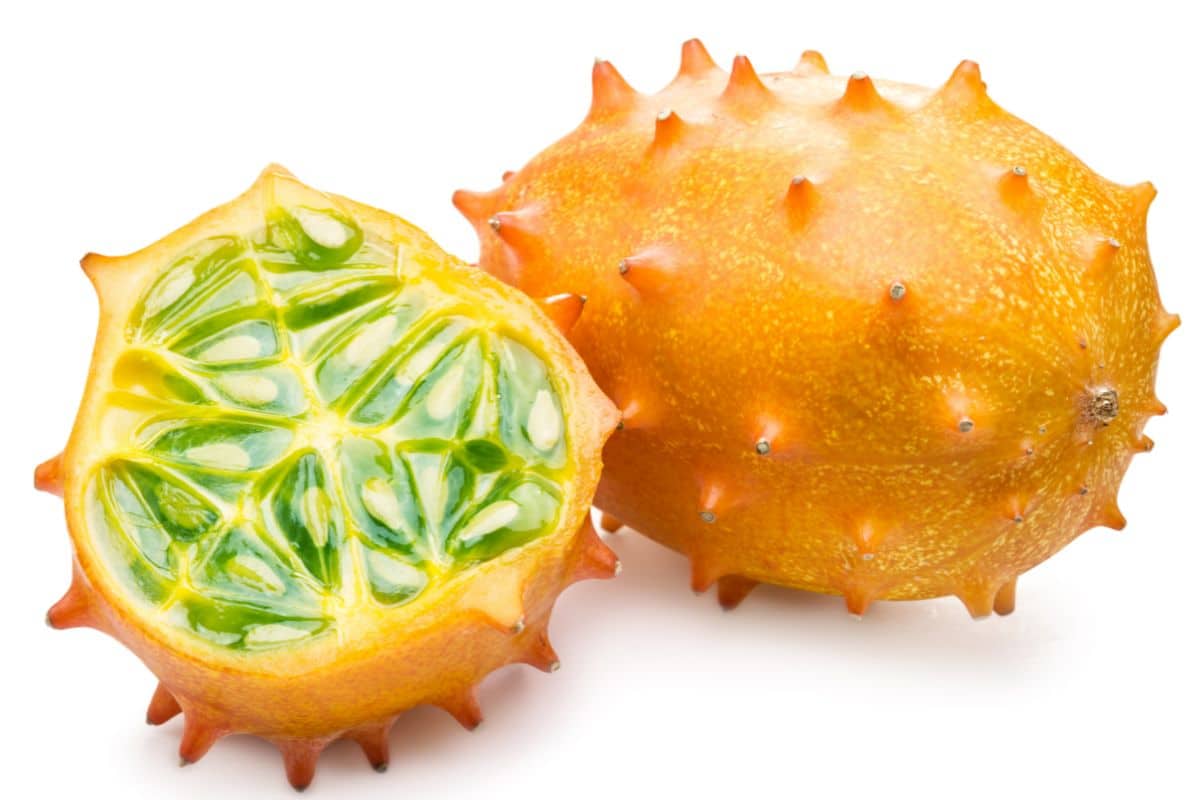
Now we are starting to get into the weird fruits. Kiwano is also known as horned melon or blowfish, as it really resembles a cross between a cucumber and a blowfish. It is an exotic and odd-looking fruit grown in Central and Southern Africa. Kiwano is used in salads, smoothies, and desserts. In recent years, kiwanos have become more available in the USA at international markets. Its popularity appears to be mostly for its stunningly unique presentation.
#30 MONSTER DELICOSA (FRUIT SALAD PLANT)
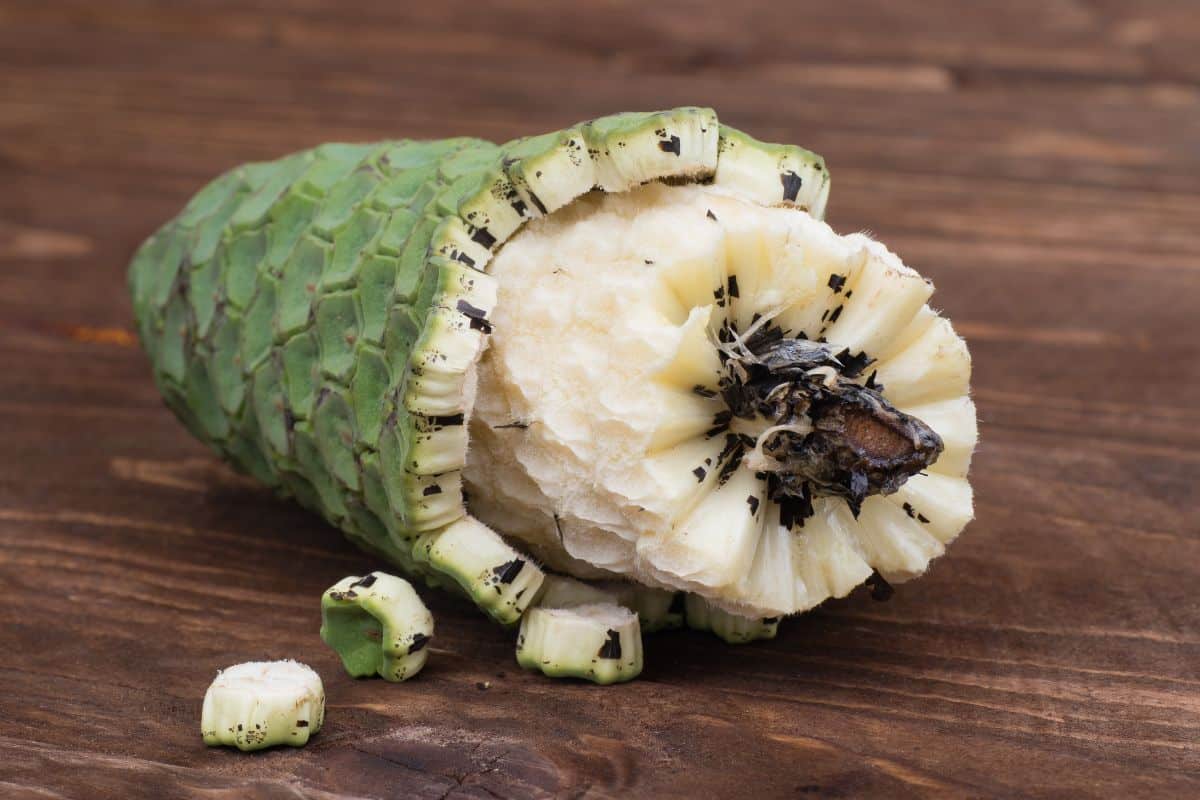
Monstera Deliciosa is one of the many intriguing fruits native to Central America. The plant is mostly grown for ornamental purposes, but it does yield some weird fruit. The fruit is the only part of the plant that is not poisonous and is said to taste like a combination of banana and pineapple.
#29 MANGOSTEEN
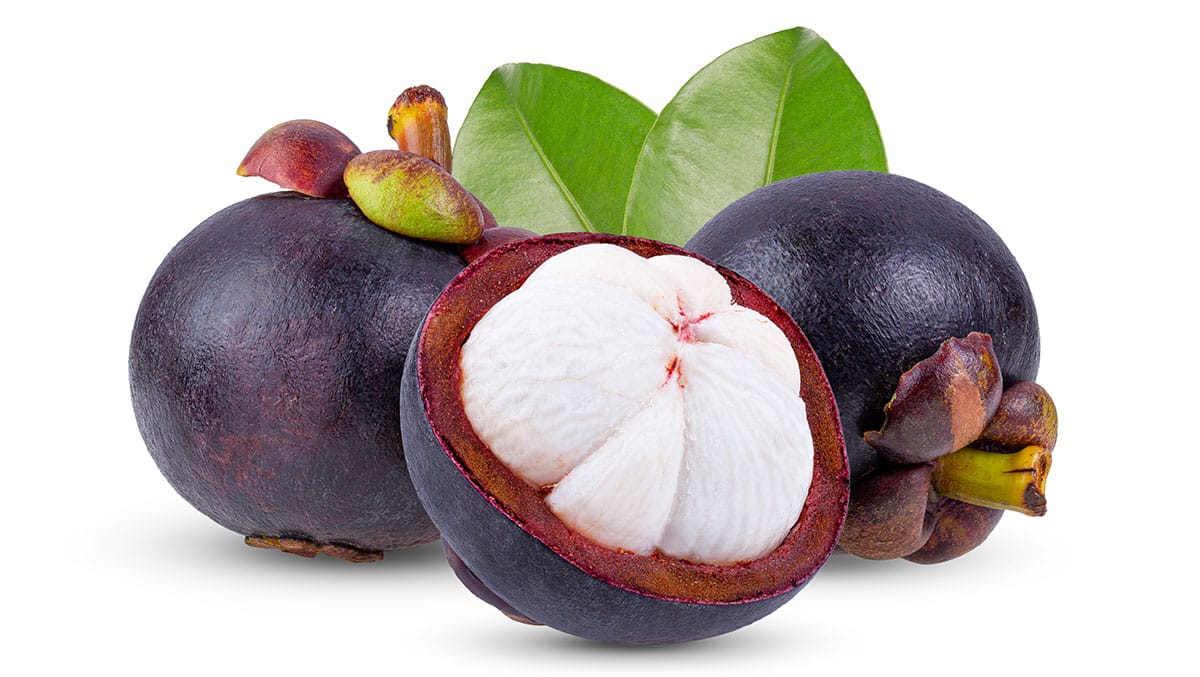
The mangosteen is a rare fruit native to the rainforests of Malaysia and Indonesia. It has an aesthetic purple exterior and a sweet and tangy white pulp. Mangosteens are often used in desserts and drinks. It is a pretty fruit that certainly has the potential to make an interesting presentation with a fruit tray. You might be able to find these at a good international market, or you can get them on Amazon for about $28 a pound.
#28 KAKADU PLUMS
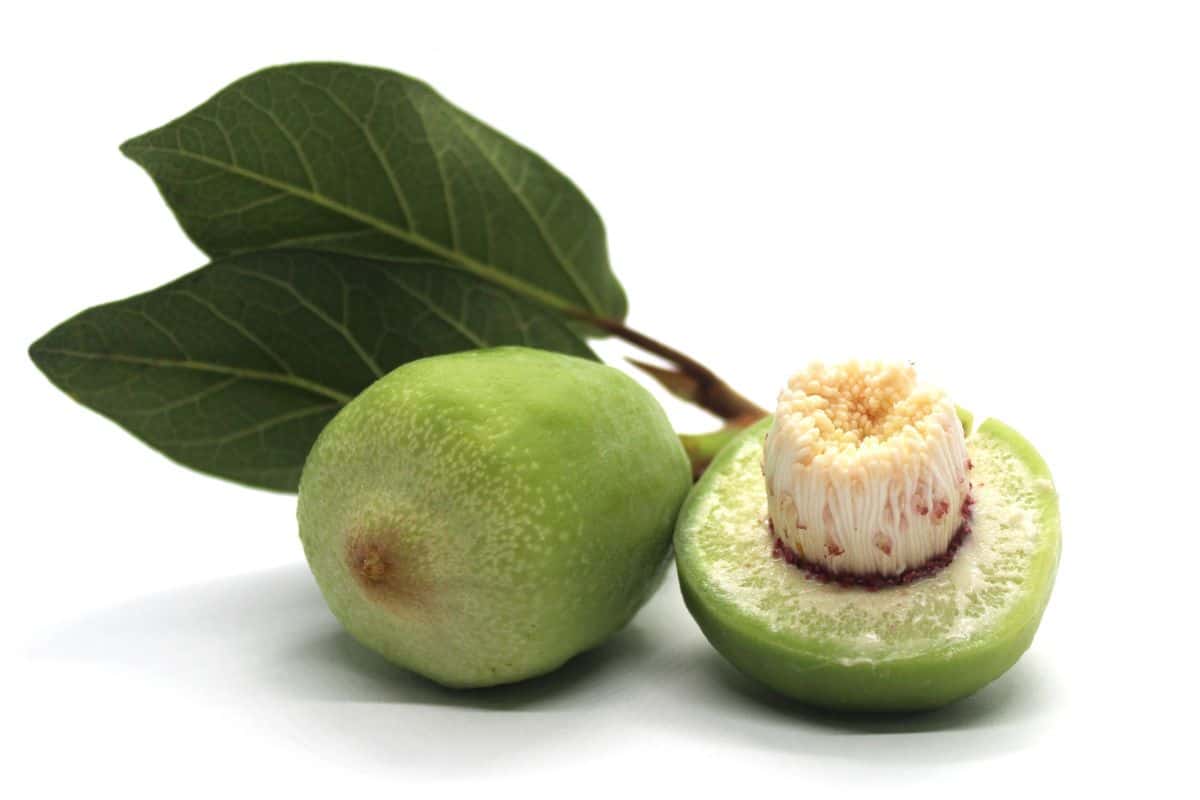
Kakadu Plums are an Australian native known to be fibrous and tart. They look pretty normal until you cut them open and find this odd white pulp. There are hundreds of other plums that grow around the world that are better tasting and don’t look so odd.
#27 KAWAKAWA
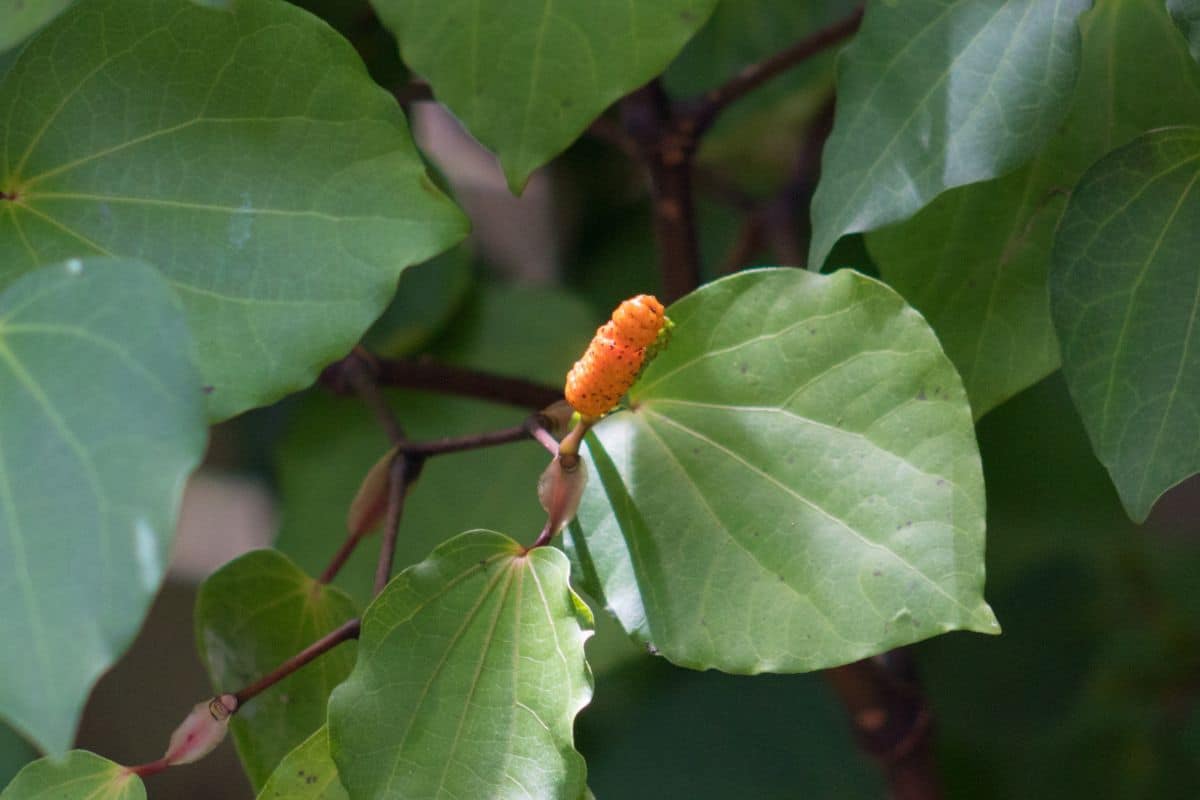
The Kawakawa is a native to New Zealand where the berries are used mostly for medicinal purposes. The native Maori people use it to relieve pain, bruises, boils, and bladder problems. The yellow berries are edible and said to be sweet tasting something like passion fruit. We included this berry in our list of oddballs as it appears to be the smallest fruit we have ever seen.
#26 LYCHEE
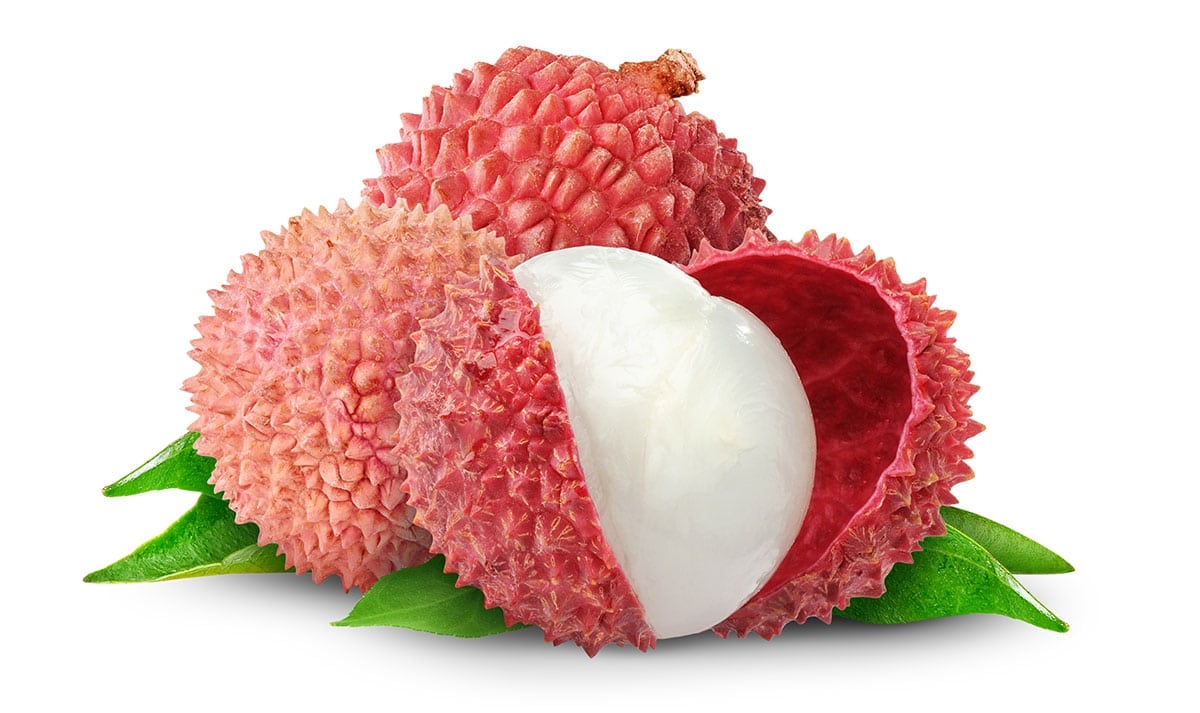
The lychee is a small round fruit with a rough red exterior and sweet & juicy white flesh inside. It’s often used in desserts and drinks. It looks sort of like a hard-boiled easter egg split open to reveal a rotted yoke. Sorry, that is just what we see.
#25 YUCCA
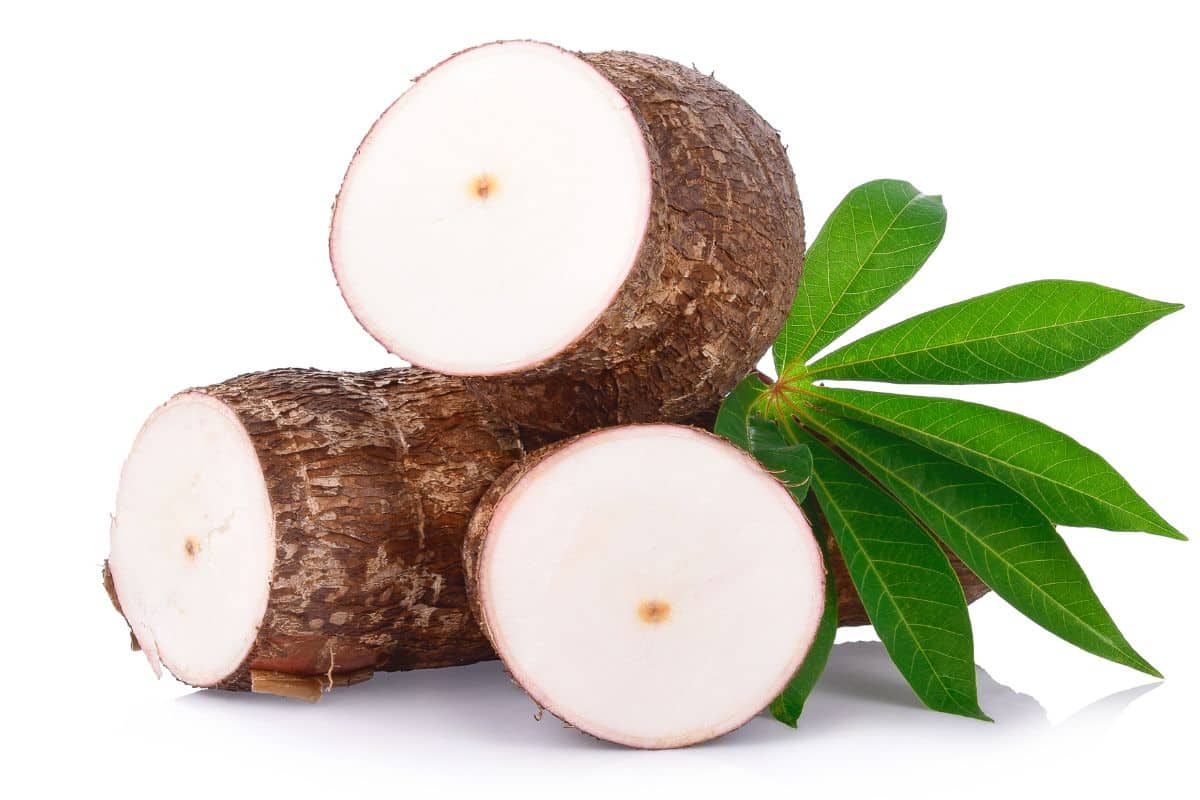
The Yucca is also known as the banana yucca though we think the resemblance to a banana is a stretch. They are native to the Western USA where they were eaten by indigenous people for hundreds of years. To us, it looks sort of like a log. It is said to be quite sweet and can be made into pies, a unique form of “applesauce” like puree, or even roasted.
#24 STARFRUIT
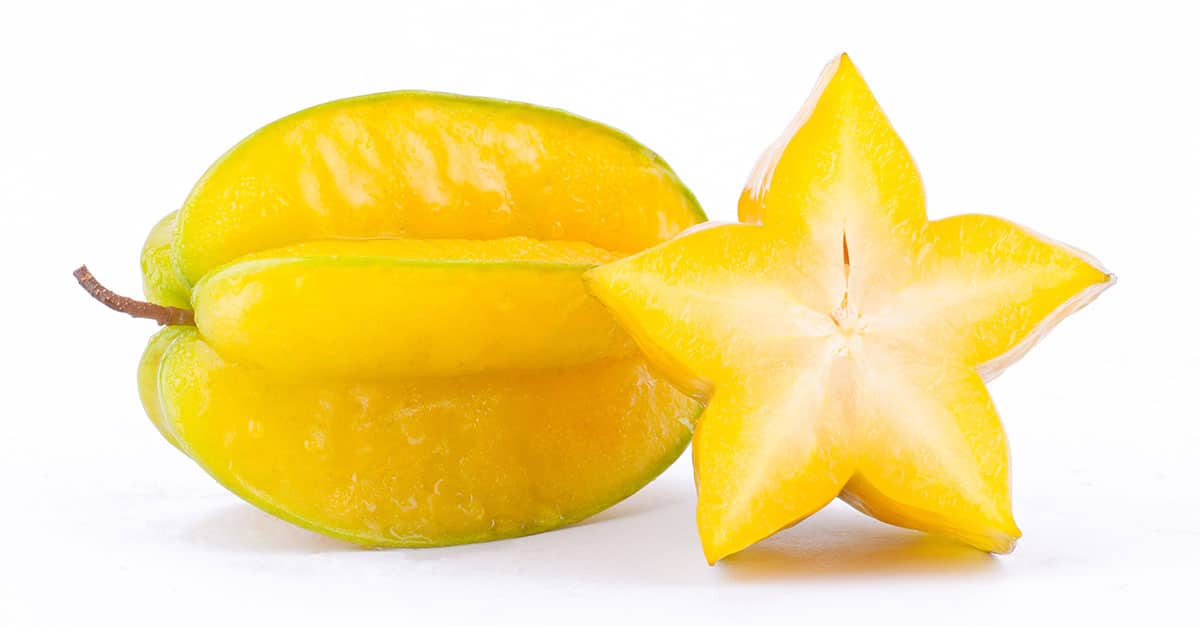
Starfruit, also known as carambola, is a beautiful fruit with a star-shaped cross-section. It has a sweet tangy flavor and is a good source of vitamin C and fiber. Star Fruit is often used in fruit or vegetable salads, pies, and other desserts. Let’s face it though, it is a strange-looking fruit.
#23 ACKEE
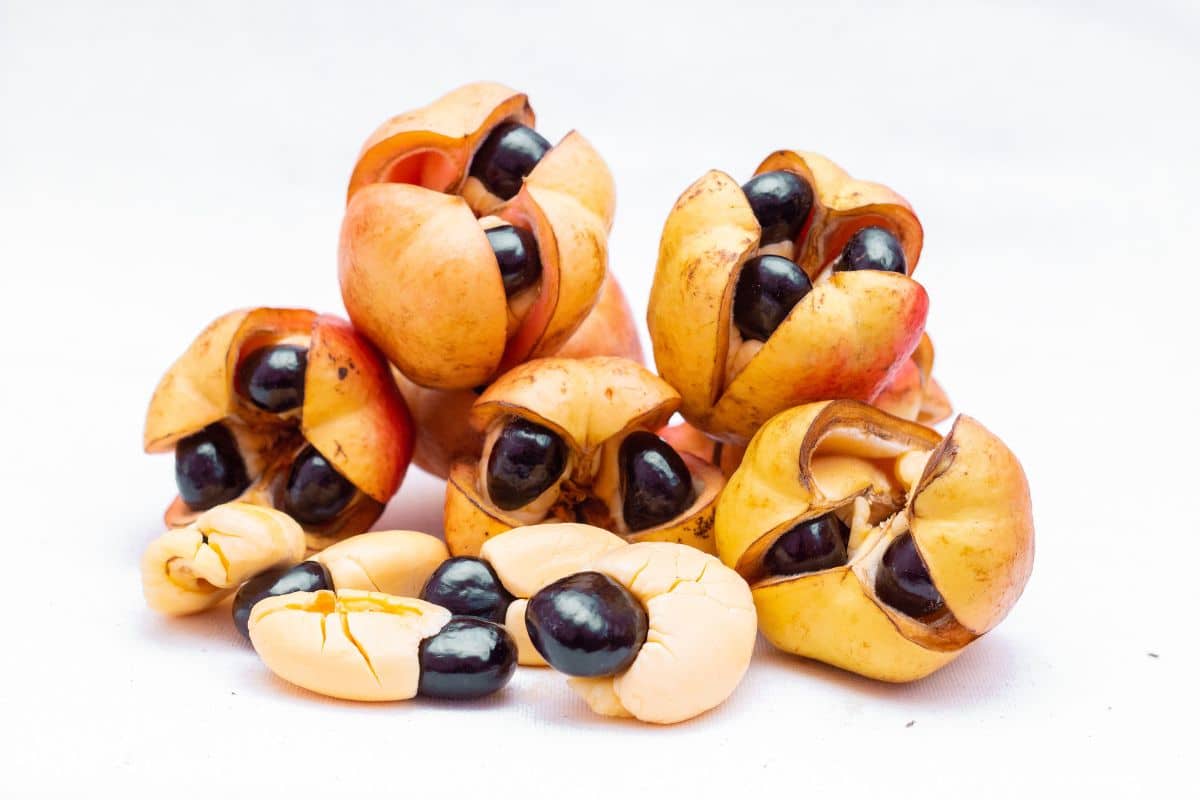
The Ackee is a pear-shaped yellow exotic fruit native to West Africa. It has a hard outer shell and a creamy pulp inside. The fruit is often used in Jamaican cuisine, where it is cooked and served with salted codfish. However, the fruit is toxic when it is unripe, and it must be prepared carefully before consumption. So, strange and dangerous. Nothing to see here folks, moving on.
#22 NONI
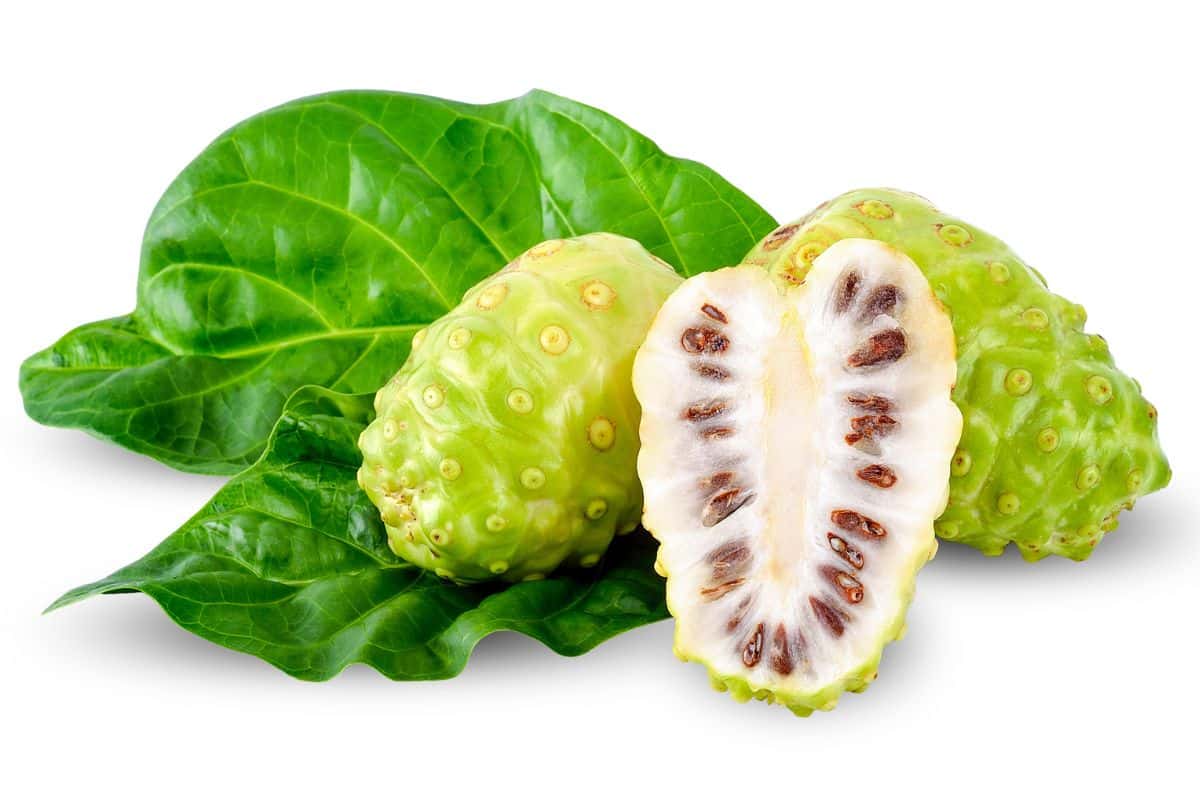
The noni is a small, lumpy fruit with a strong, pungent odor. Despite its unappealing smell, the fruit is valued for its purported medicinal properties and is often used in traditional Hawaiian medicine.
#21 YANGMEI
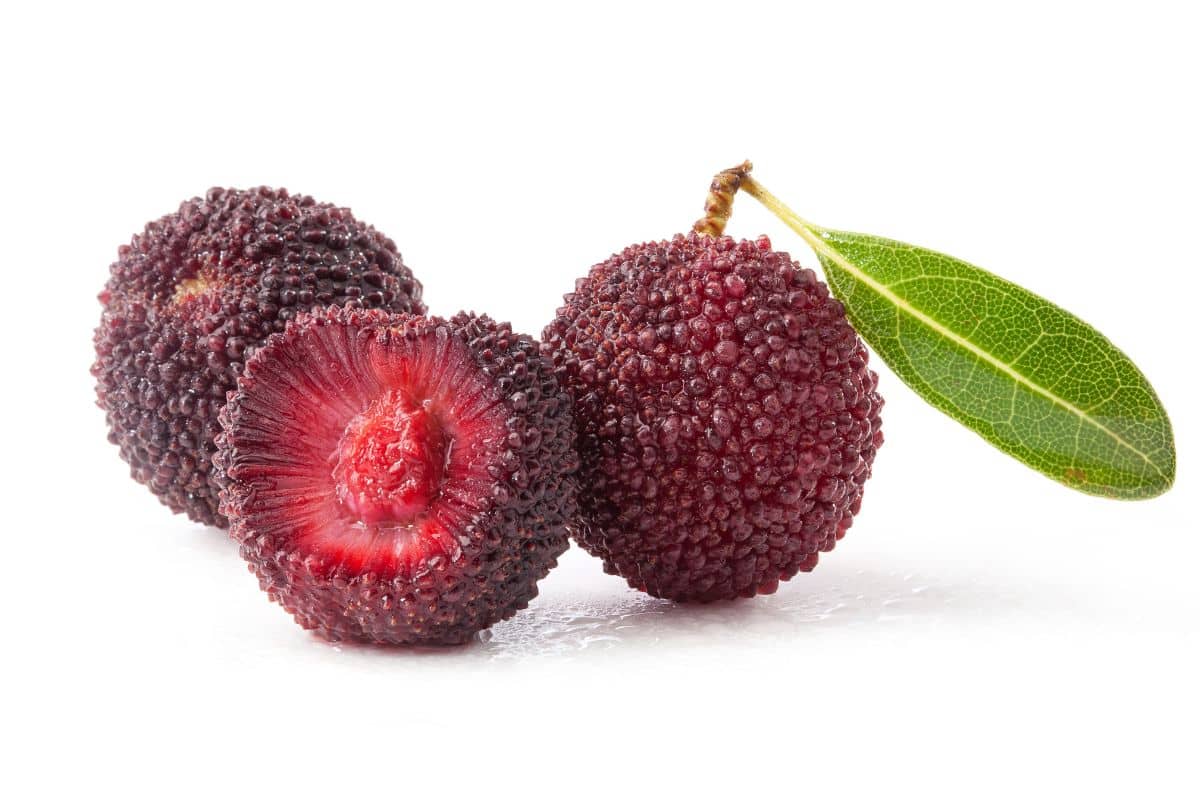
Yangmei is commonly grown in South-Central China and Taiwan. It goes by many nicknames such as Waxberry, China Bayberry, and Red Barberry. The berries are eaten fresh, dried, canned, and in drinks including both beer and wine.
#20 SALAK
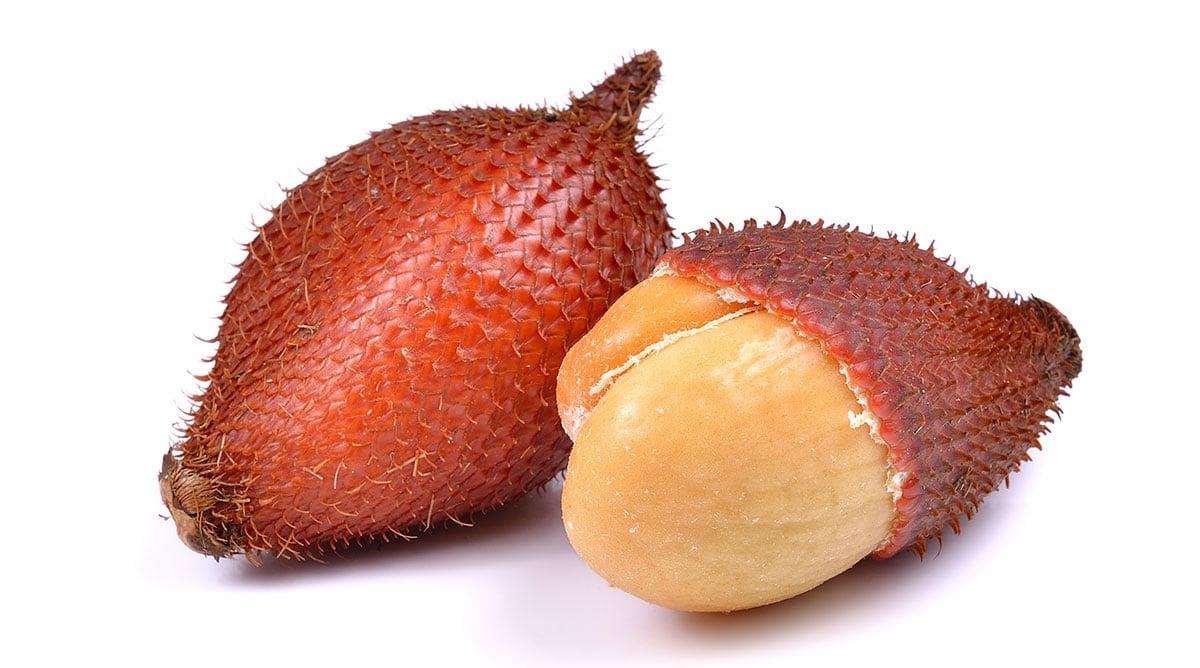
Salak is a fruit that is native to Java, Sumatra, Indonesia, Malaysia, and Thailand. It has a scaly, brown exterior that resembles a snake’s skin. Inside, the flesh is white with a slightly sour taste. Salak is often eaten fresh or used in salads and desserts and is known for its high nutritional value, but it is the cool skin that earned it a spot as a weird Asian fruit.
#19 FIG
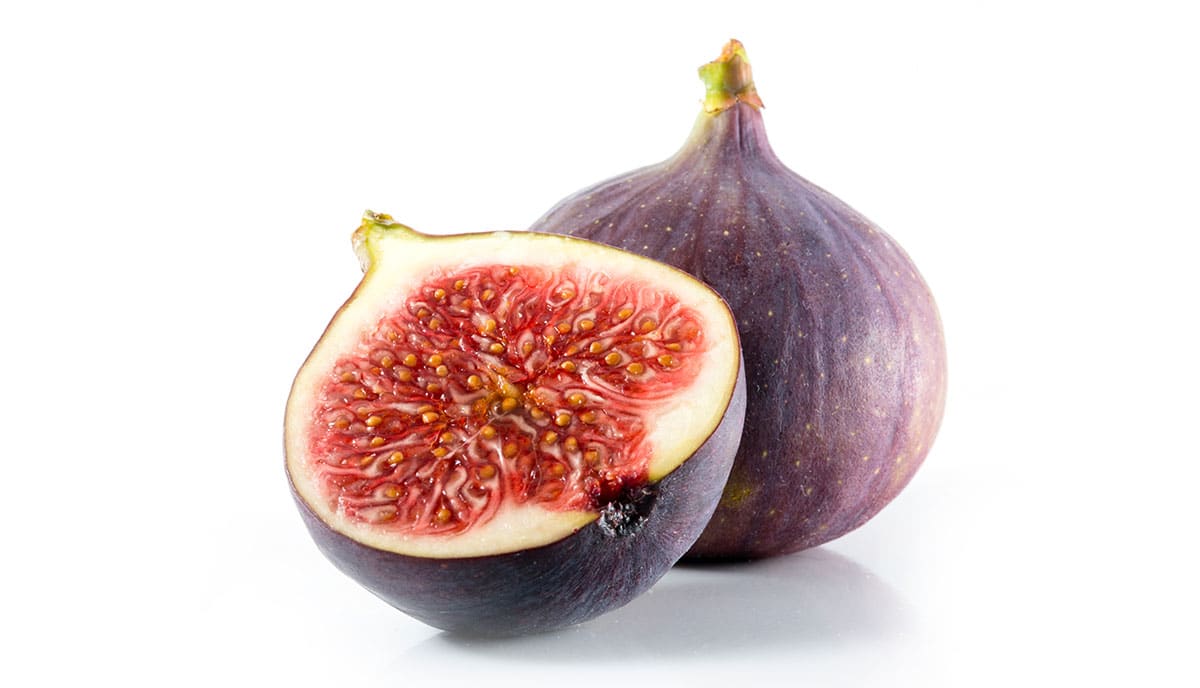
Figs are so common, you may not think of them as strange, but hey take a close look at the pulp. The tiny edible seeds look like little amoebas swimming around the pulp. Figs are an ancient fruit native to the Mediterranean region but are today grown around the world. Figs can be eaten fresh, dried, in jams & jellies, and in myriad ways in a variety of desserts. Turkey is the world’s largest producer of figs followed by Egypt and Morocco.
#18 DURIAN
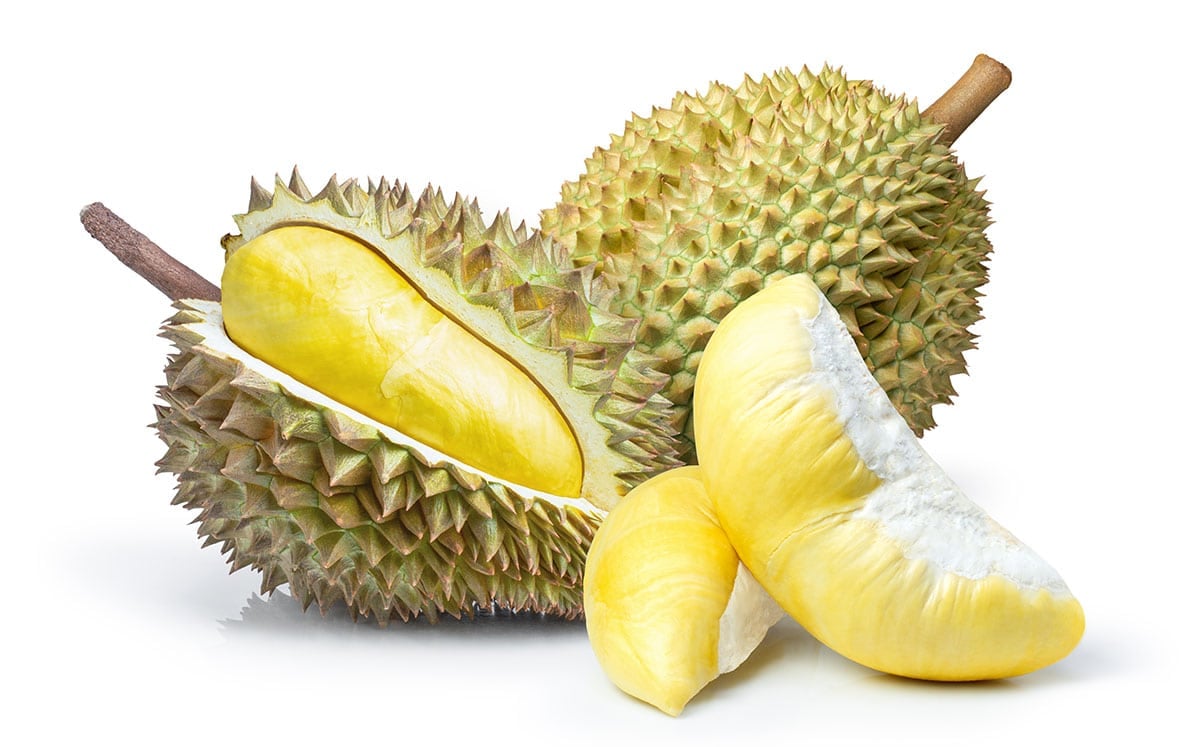
Durians are grown in Indonesia, the Philippines, Malaysia, and Thailand. The durian is a large spiky fruit with a strong odor that has been described as a mix of rotting vegetables and rotting cheese. They are generally banned, due to their smell, from public transport in the Philippines and Malaysia where they grow. Despite the smell, it’s a popular fruit in Southeast Asia and is often used in desserts. The Durian looks much like a Jackfruit, but they are different in some ways.
#17 KWAI MUKS
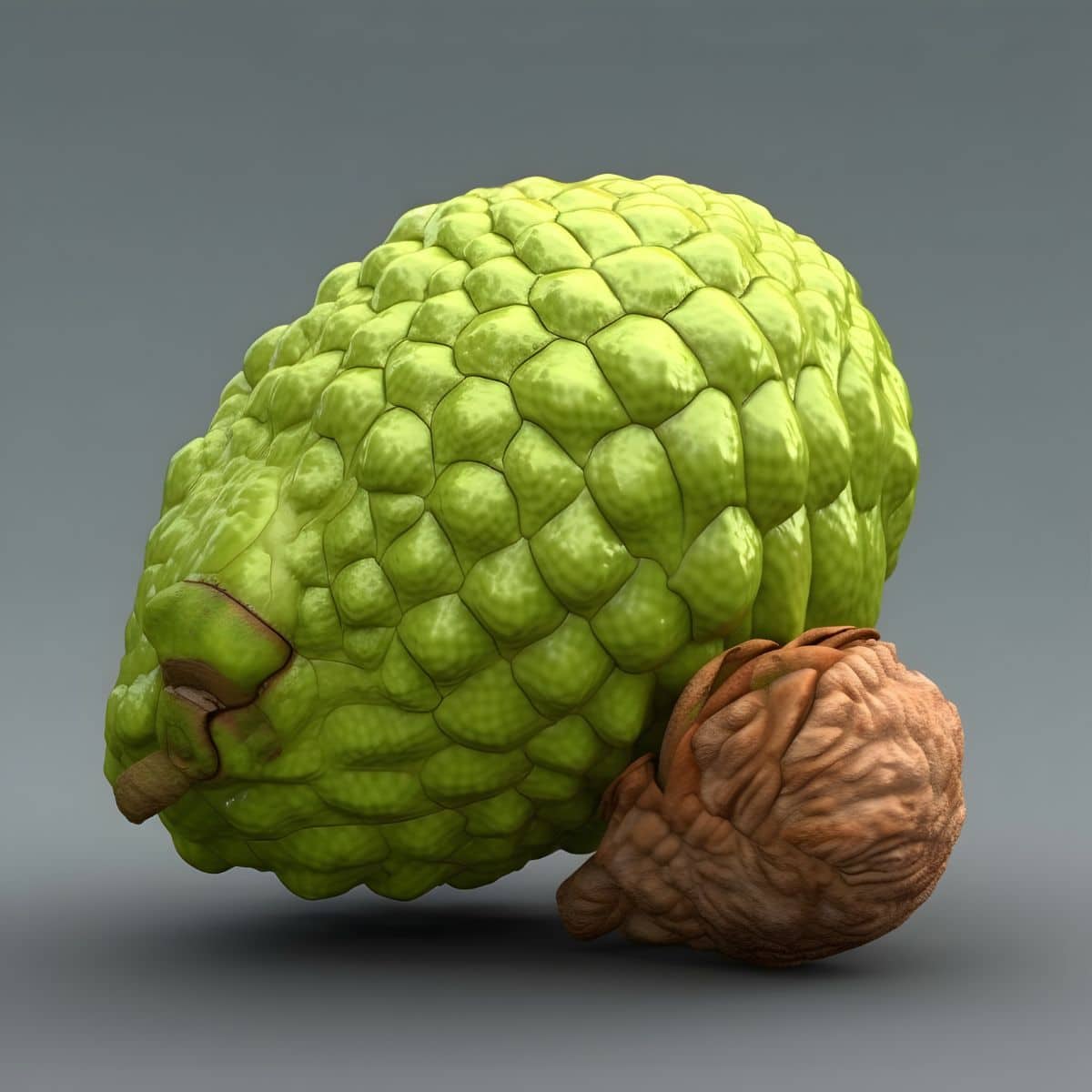
Kwai Muks are grown in Southern China. These small fruits are said to have an excellent flavor when ripe and can be eaten raw, dried, or preserved in a sugary syrup. They are related to the jackfruit and are one ugly fruit. They seem to grow into whatever shape suits them and appear lumpy and discolored.
#16 PANDUS (SCREW PALM)
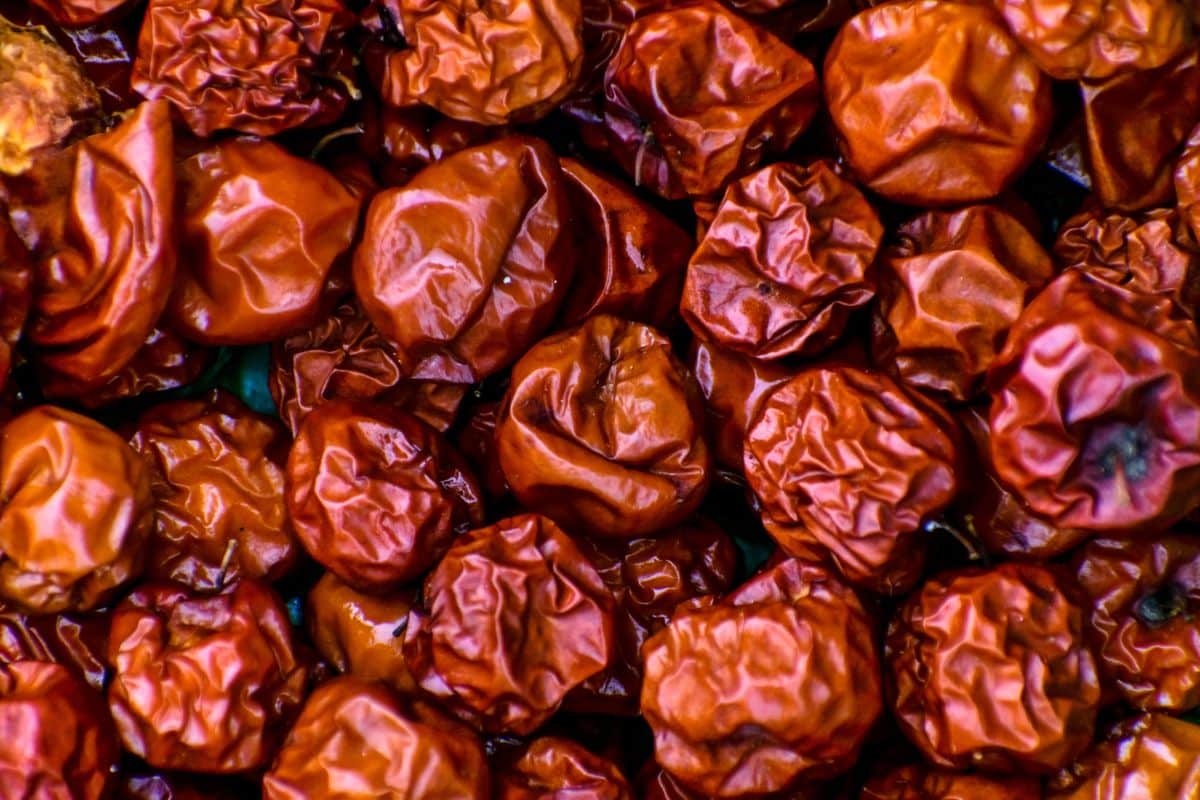
The pandanus is found in tropical regions including SE Asia, Florida, Hawaii, and other Pacific Islands. It has a mildly sweet taste that is a cross between pineapple and mango. Unfortunately, it is a thick-skinned fruit, and very difficult to eat as there is so much peel-like stuff to get through.
#15 DOUBLE COCONUT
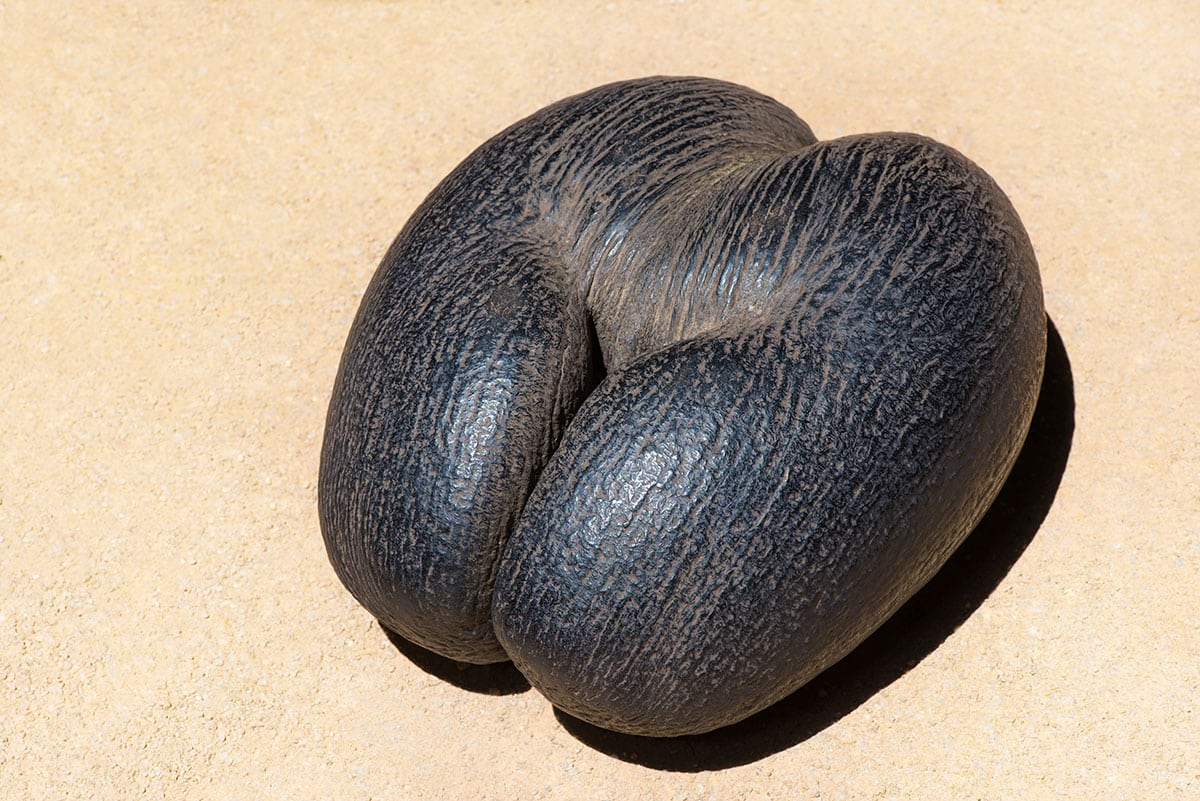
The Double Coconut is also known as the sea coconut, and probably wins first place among rare fruits. It is only found on the islands of Praslin and Curieuse in the Indian Ocean. Double coconuts can take 5-10 years to ripen, and the pulp is generally not eaten. They are grown for their shells which are used to make platters and water vessels.
#14 BUDDHA’S HAND
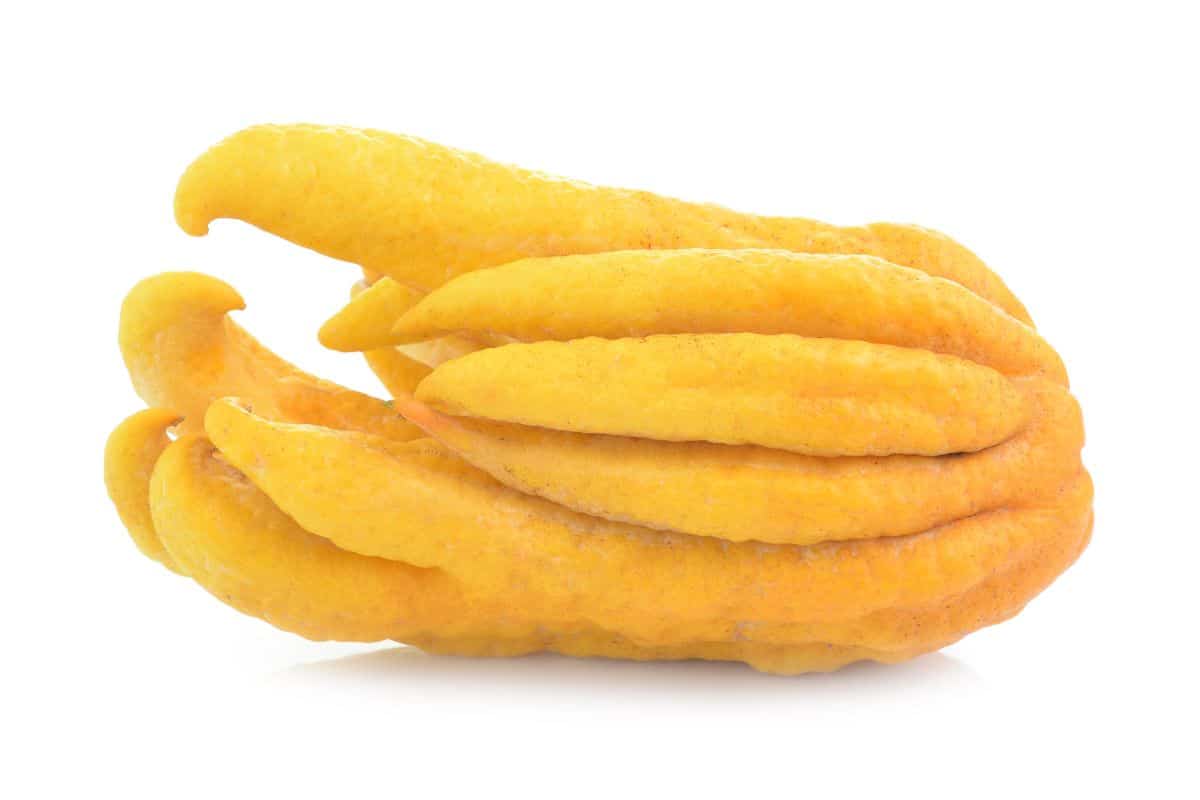
Buddha’s hand is a fragrant citrus fruit that is native to China and India. It has a finger-like shape with bright yellow skin that looks like a hand. Buddha’s hand has a sweet, lemony aroma and is often used in cooking and baking as a flavoring agent.
#13 JABUTICABA
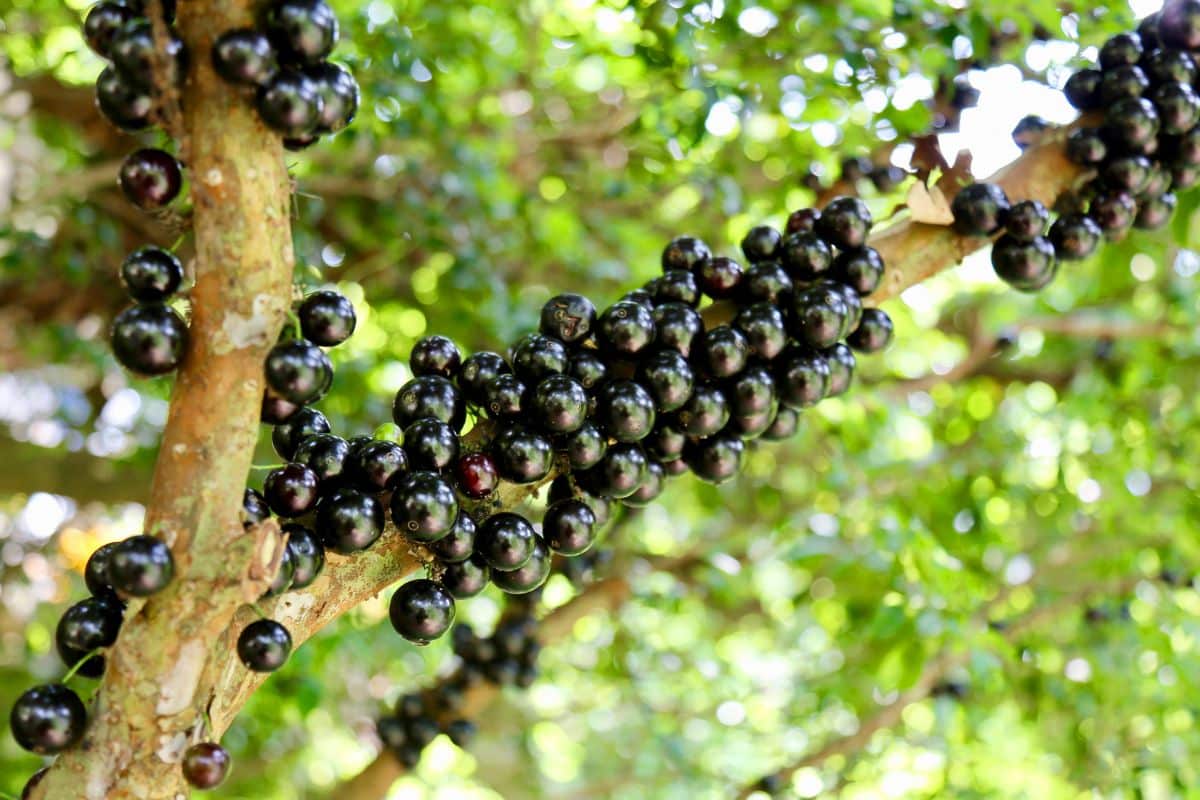
The jabuticaba is from Southern Brazil but is now grown in some areas of the USA. The fruit is not odd in itself, but only in how it grows. It grows in small clusters clinging to the bark of its tree. Looks to me like a tree with a skin condition. Not sure I can eat that, but someone must because it is known for its sweet white pulp that can be made into jam or wine.
#12 AKEBIA
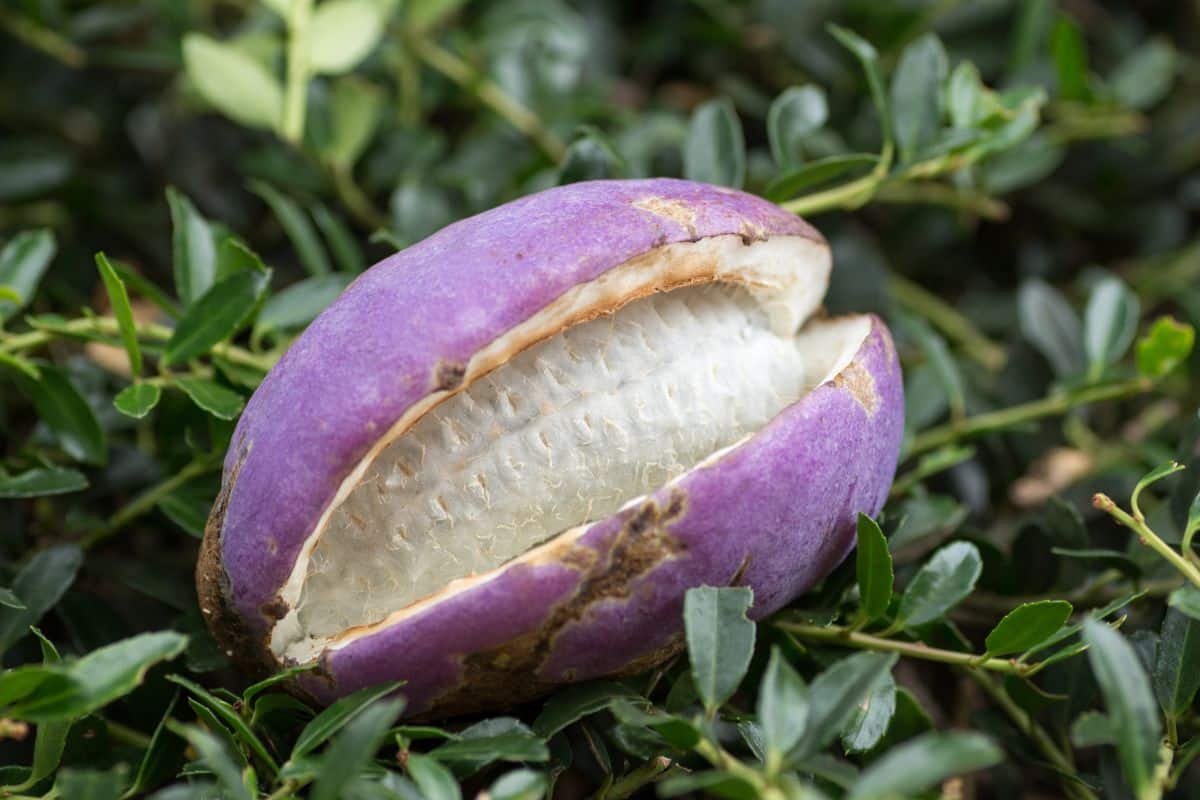
This Japanese native is sweet with a raspberry-like taste and is used in Japanese desserts. I am afraid the movie Aliens ruined me for life. This just looks like the alien cocoons opening to the horror of Sigourney Weaver. Nothing to see here folks, moving on.
#11 MEDLAR
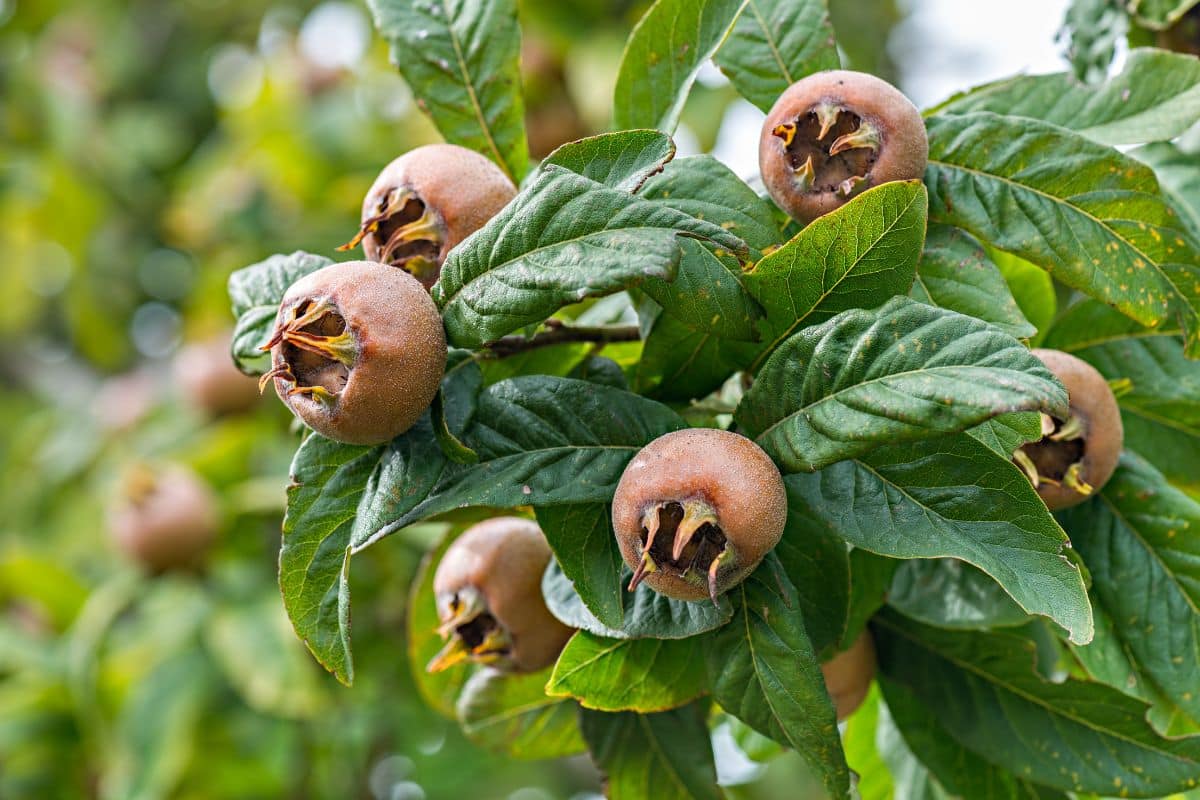
We are just going to follow up the Akebia with another fruit that looks like an alien pod opening up. The Medlar’s origins trace back to Persia, modern-day Iran. Its pulp is mushy and is said to taste something like fruit butter.
#10 PACAY (ICE CREAM BEAN)
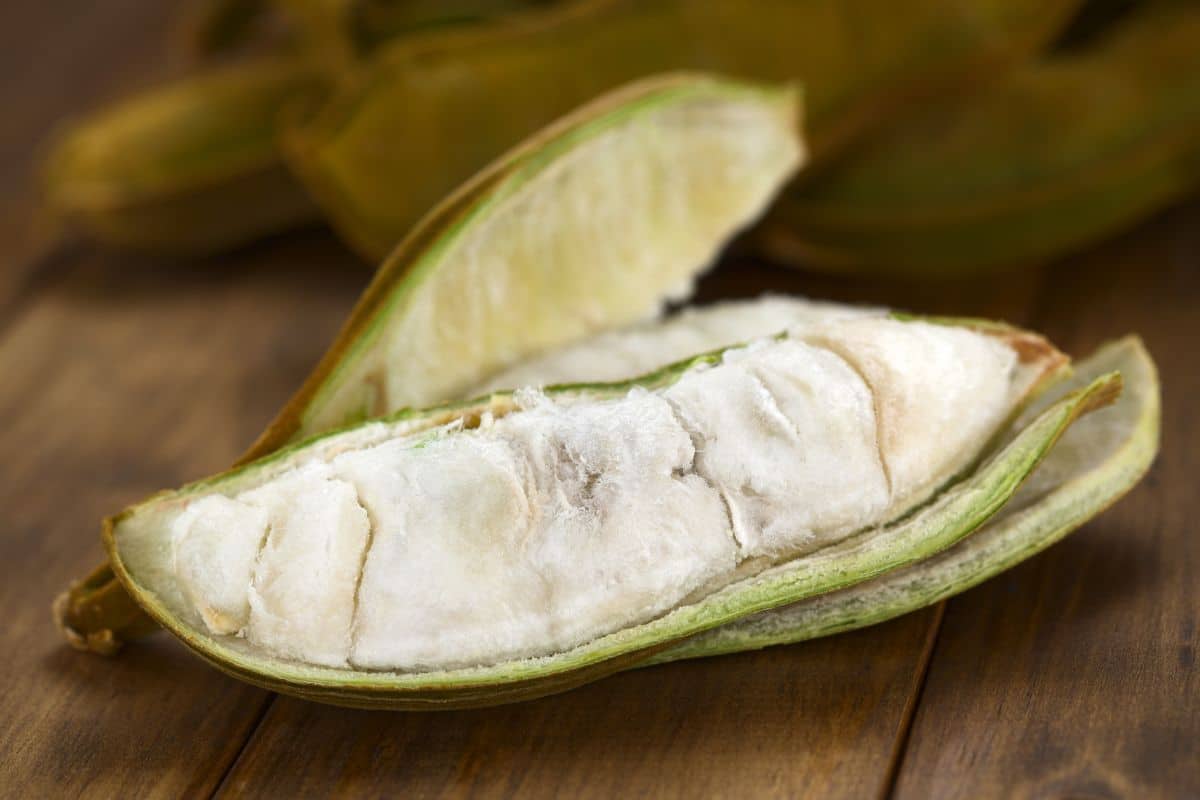
We follow up that alien cocoon thing with something a little more light-hearted as the Pacay looks like, well… Anyway, anything called an ice cream bean already has our attention. It is full of delicious beans.
#9 WOOD APPLE
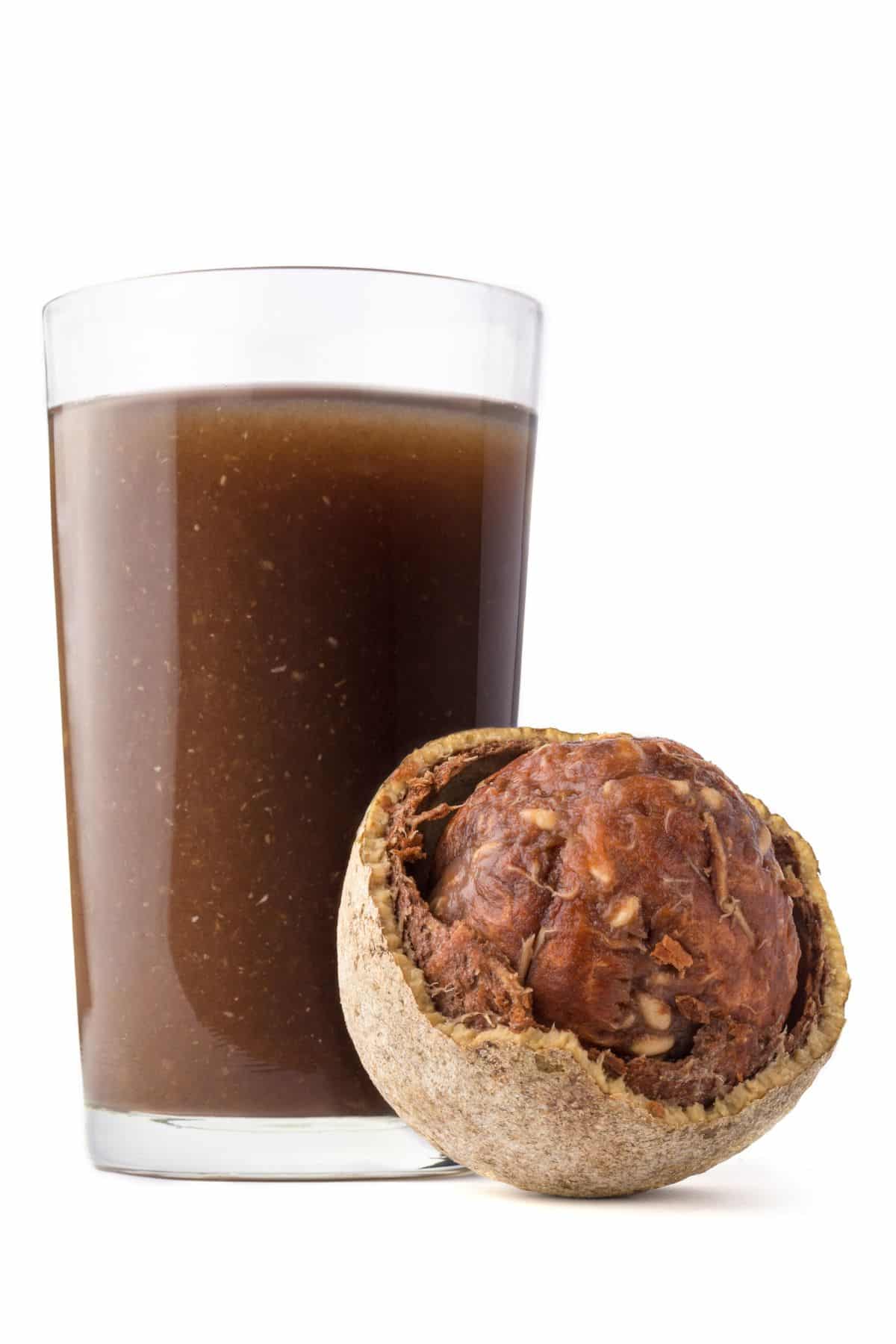
There are 30,000 varieties of apples worldwide, but we think this one just stole the name apple. While native to Southern India, it now grows around SE Asia. It has a hard shell you have to split open to get to the mushy pulp. Supposedly locals scoop out the flesh and freeze it to make something like a natural ice cream. Seemed only right to throw this one in after the Ice Cream Bean fruit.
#8 JUNGLESOP
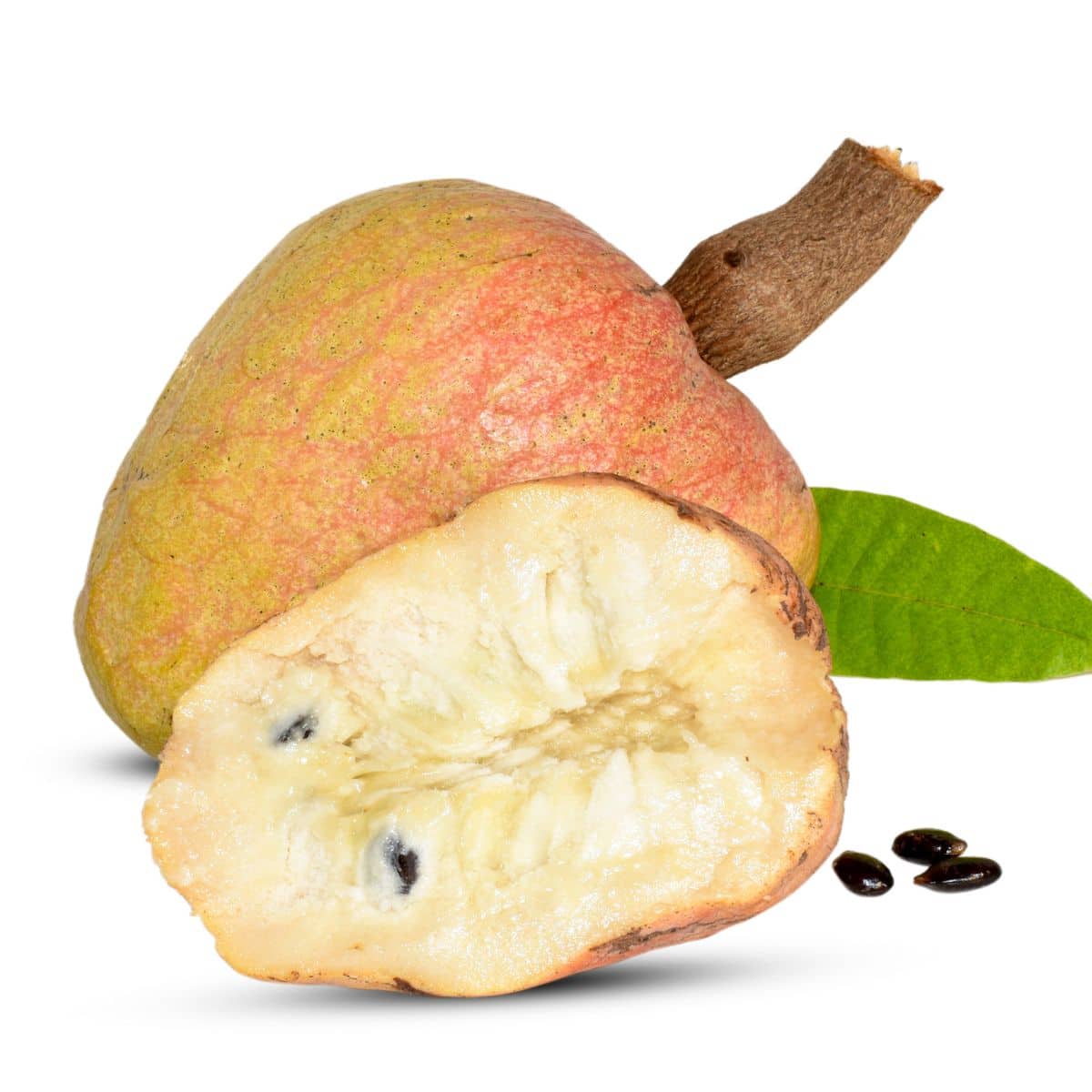
The junglesop is an odd fruit native to Central Africa that can grow to as large as 15 kg (33 pounds). It is also known as the cherimoya or custard apple. It is a highly nutritious fruit that can vary widely in taste from sweet to sour with a creamy pulp often compared to a mix of banana, pineapple, and strawberry. Oh, but it gets better. They are also known as the ice cream fruit as they are often chilled and eaten directly from their skin with a spoon. “Ice Cream fruit”, that is all we needed to know.
#7 BREADFRUIT
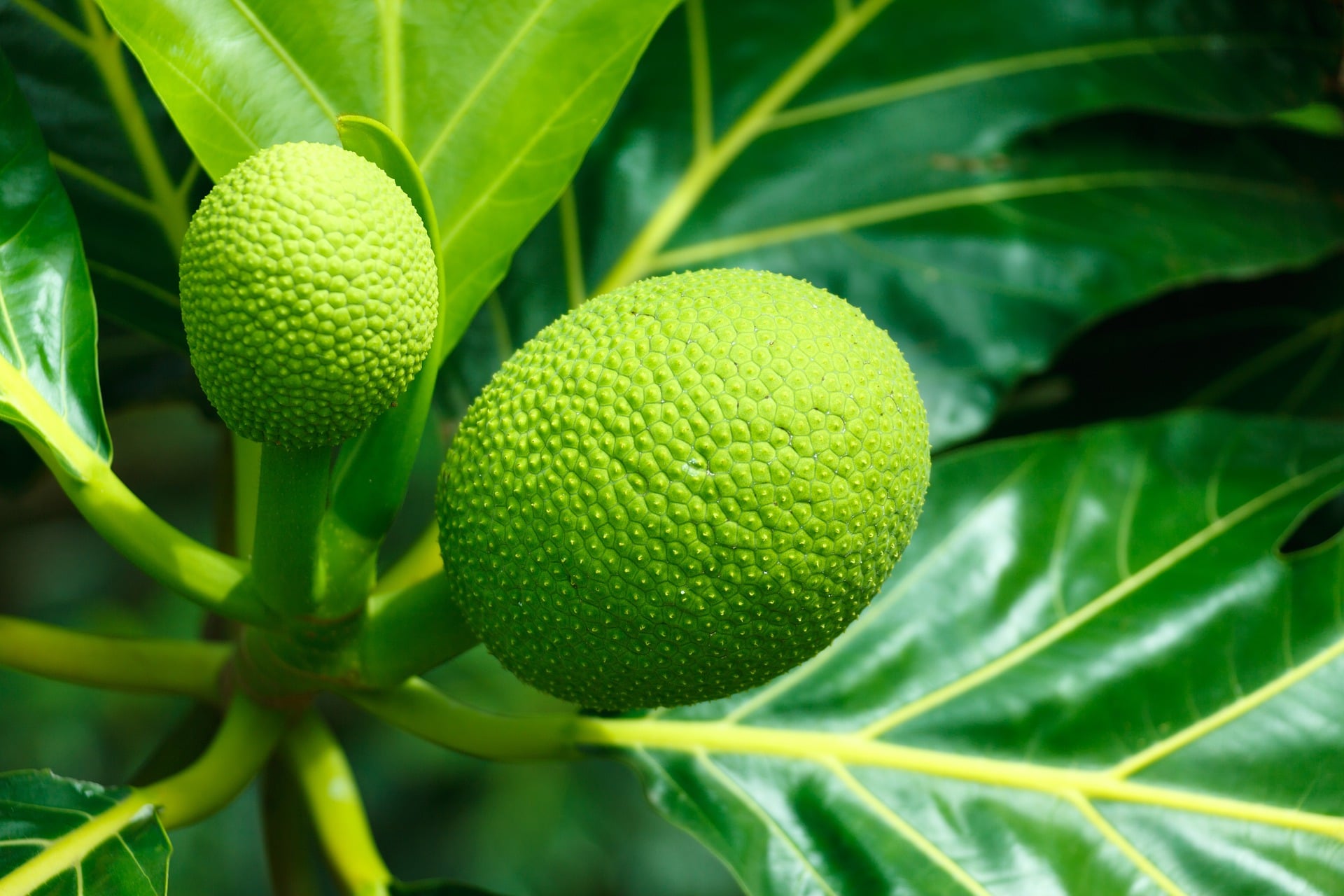
The Breadfruit is a cousin to the jackfruit and is native to the Philippines and New Guinea where it is often roasted, baked, fried, or boiled. When cooked the taste is said to be reminiscent of freshly baked bread which is the origin of its name.
#6 CEMPEDAK
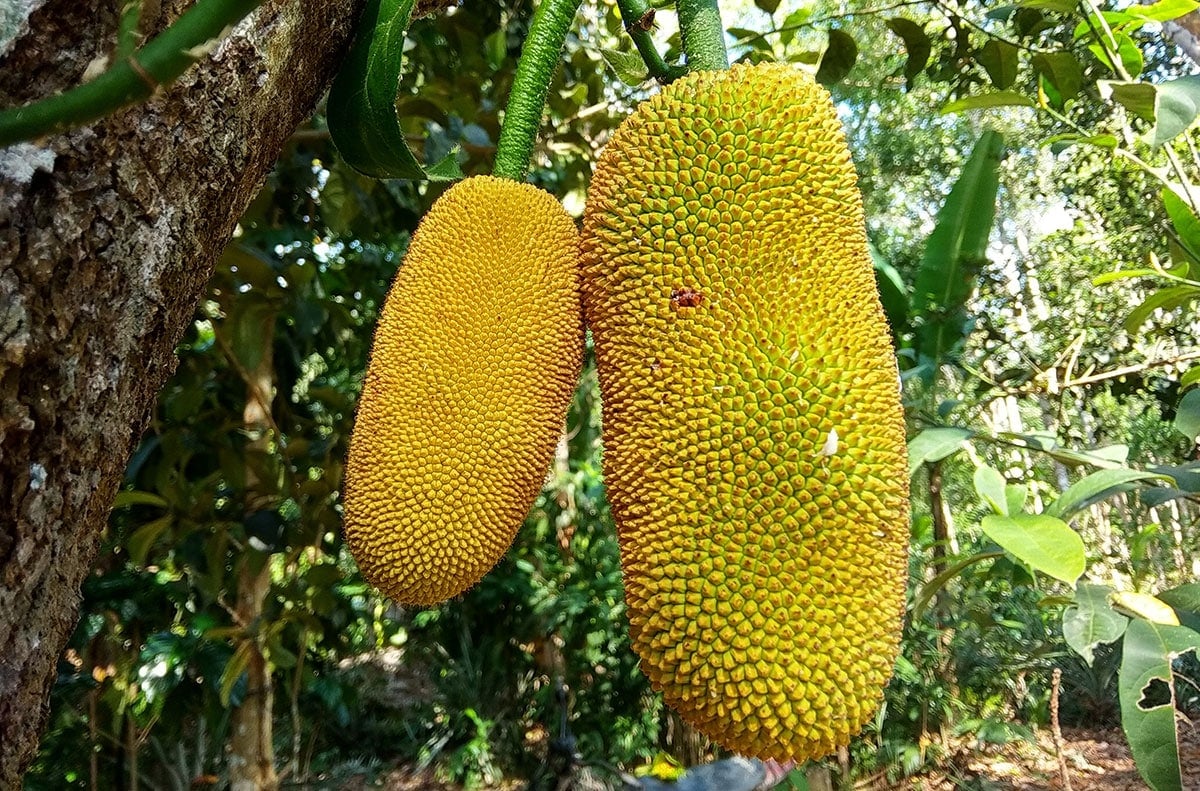
The cempedak is related to the breadfruit except that instead of smelling like bread it stinks! They grow in Southeast Asia and are noted for their interesting scaly skin. While they can be eaten raw, they are more often fried or boiled.
#5 DEAD MAN’S FINGER
Dead Man’s Finger is native to China, Nepal, India, Bhutan, and Myanmar. It is a blue fruit typically 3-5 inches long with a sweet pulp. Its smooth skin gives the fruit its name as it feels like a cold finger.
#4 XANTHIUM STRUMARIUM
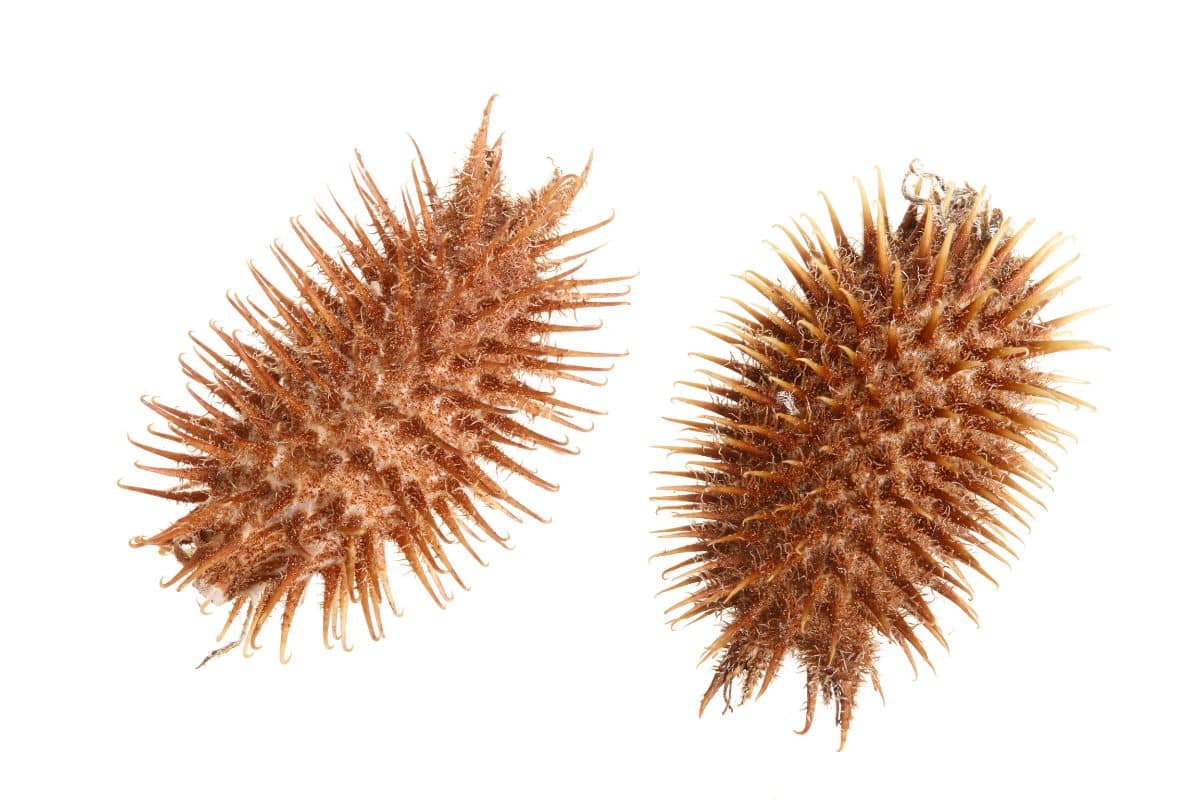
Xanthium Strumarium wins the 1st prize among weird fruit names. It is, however, also known as the Cocklebur. It is native to North America but has been exported to Australia, New Zealand, and South America. Unfortunately, it is largely considered an invasive weed. While used in some cultures for purported medicinal benefits, the fruit also contains the toxic chemical carboxyatractyloside and several other toxins.
#3 JATOBA (STINKING TOE FRUIT)
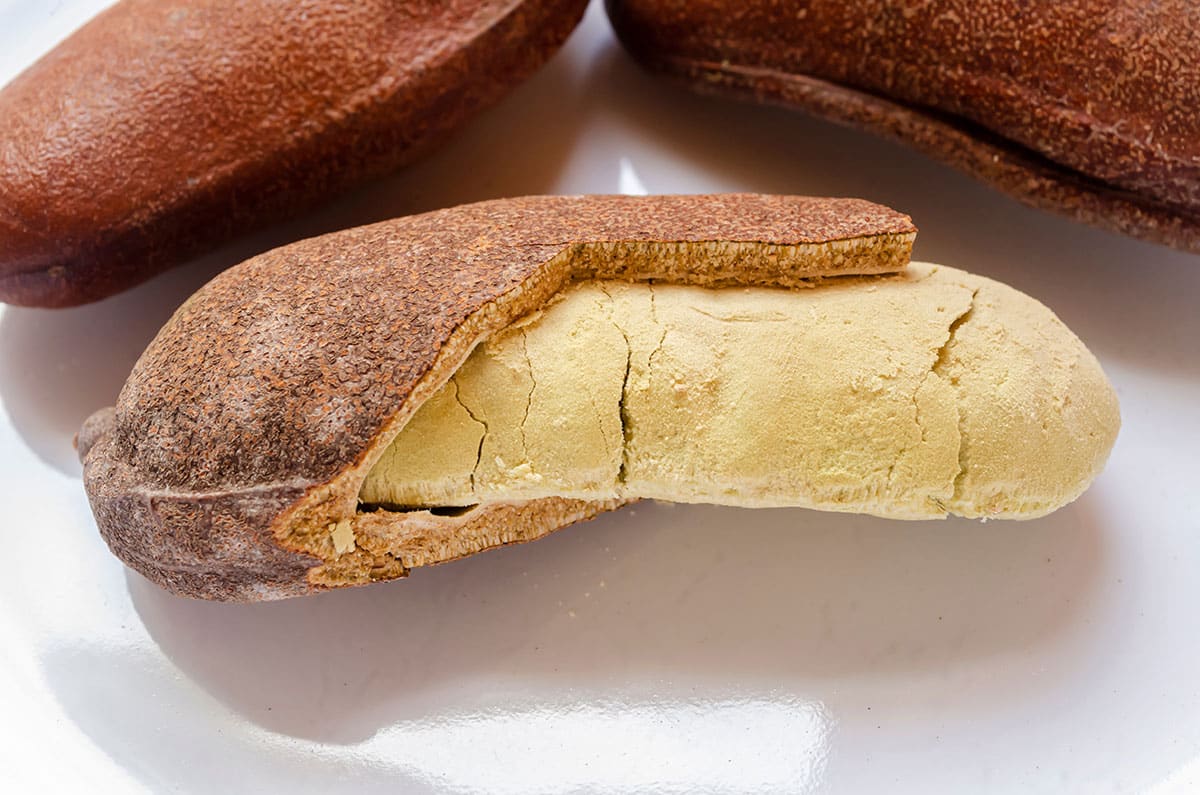
The Jatoba is also called the Stinking Toe Fruit. This puts it right up there on the list of weird fruits with Dead Man’s Finger. The fruit’s pulp is enclosed in a thick brown pod whose shape looks rather like a toe. They are said to be fairly sweet, but the unpleasant smell gives it the name. The Jatoba is native to Central and South America and is difficult to find outside of these regions.
#2 HALA FRUIT
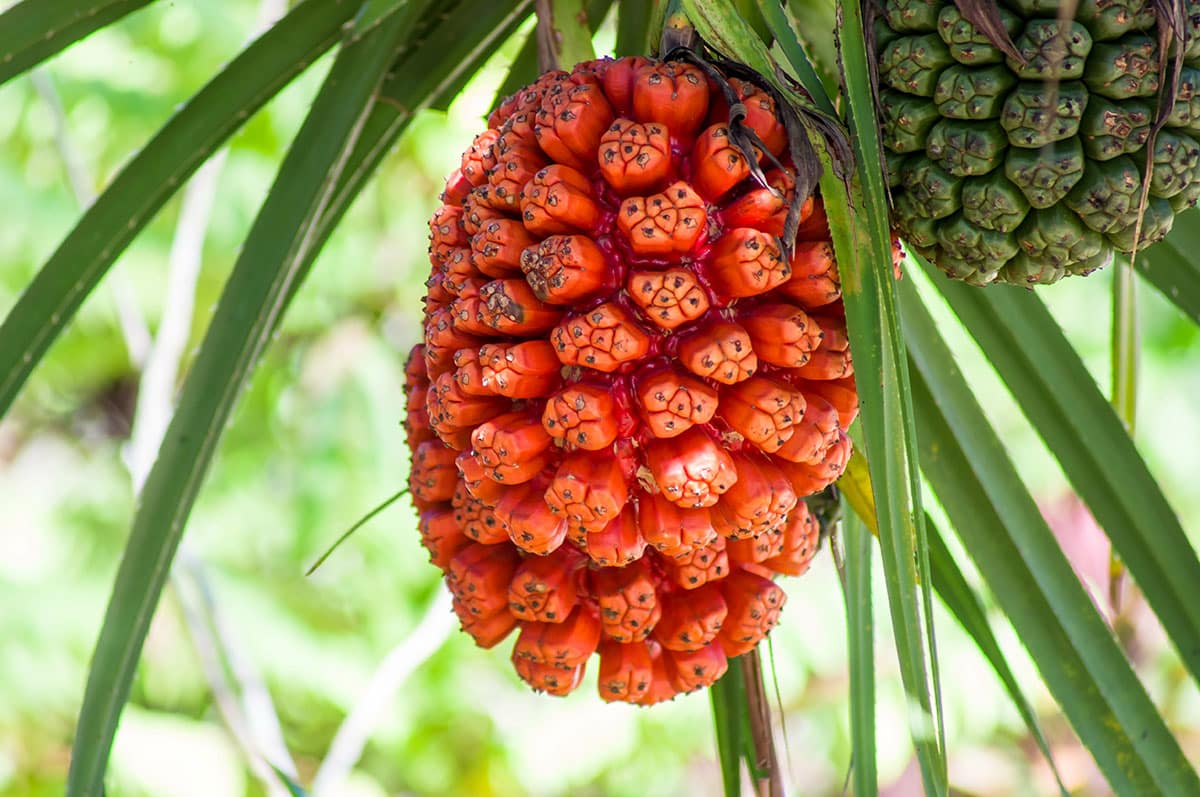
The Hala Fruit originates from Polynesia. It is also known as the fruit that looks like an exploding planet. Hard to argue with that. These are big fruits growing to be 8-12” across and are eaten both raw and cooked. It is a staple on some of the atolls in Micronesia. We think this one may actually deserve the prize among odd fruits, but we will give the prize to the Dragon Fruit.
#1 DRAGON FRUIT
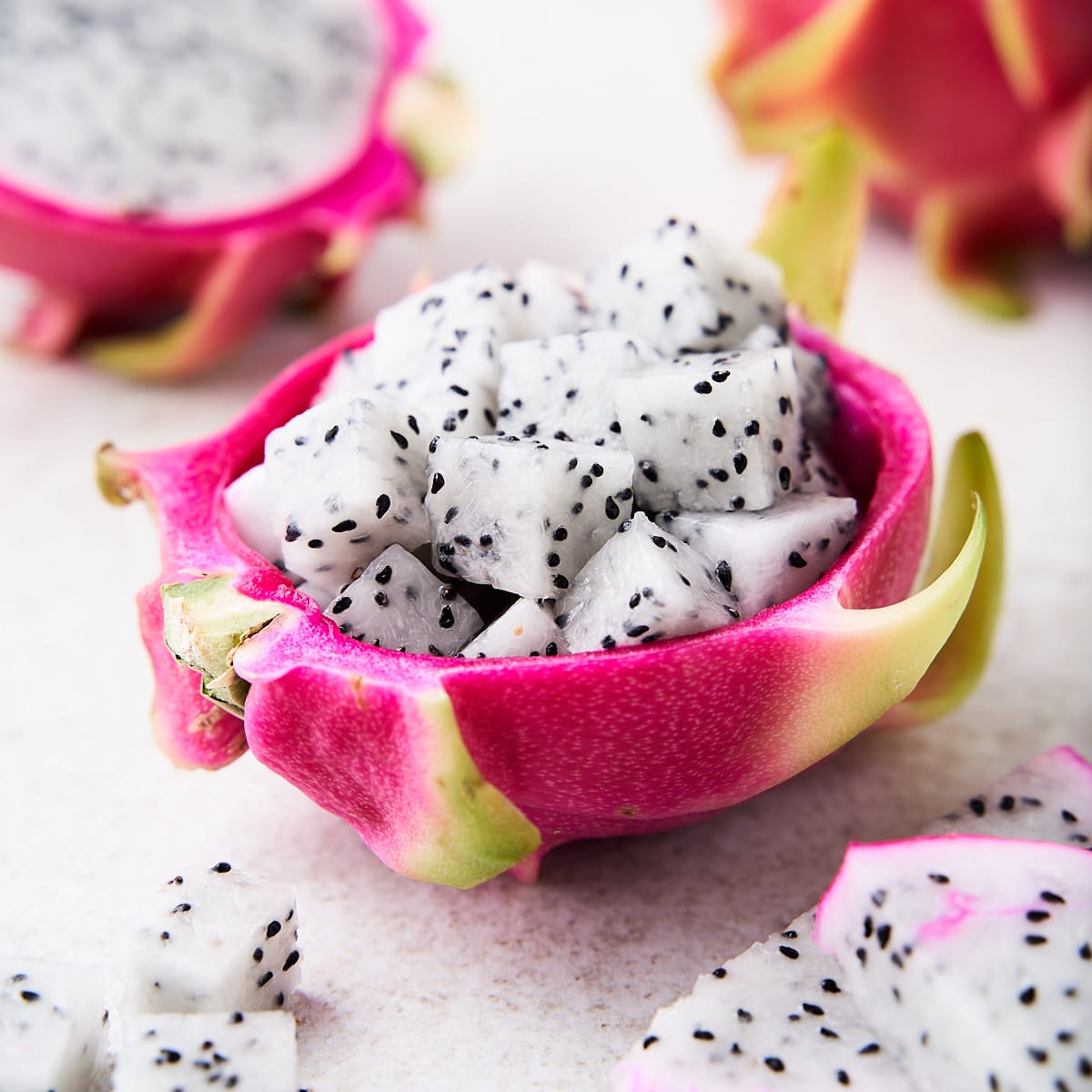
You probably knew that the dragon fruit would be somewhere near #1 on this list. It would seem more exotic if you couldn’t buy them in most groceries today. They became popular for what you can do with them aesthetically as we show in this photo. If you haven’t had one, they taste like a cross between pears and kiwi but honestly a little bland. They are generally eaten by cutting them in half and eating out of the skin, or peeling them and cutting them into chunks to eat plain with yogurt or perhaps on a salad. For more on dragon fruit varieties check out How to Cut Dragon Fruit (& More).
That gets us through our list of odd fruits, but if you didn’t see the weird fruit you were looking for, check out our articles on 129 Tropical Fruits and 40 Exotic Fruits. And, as always, happy cooking from your friends at Live Eat Learn!

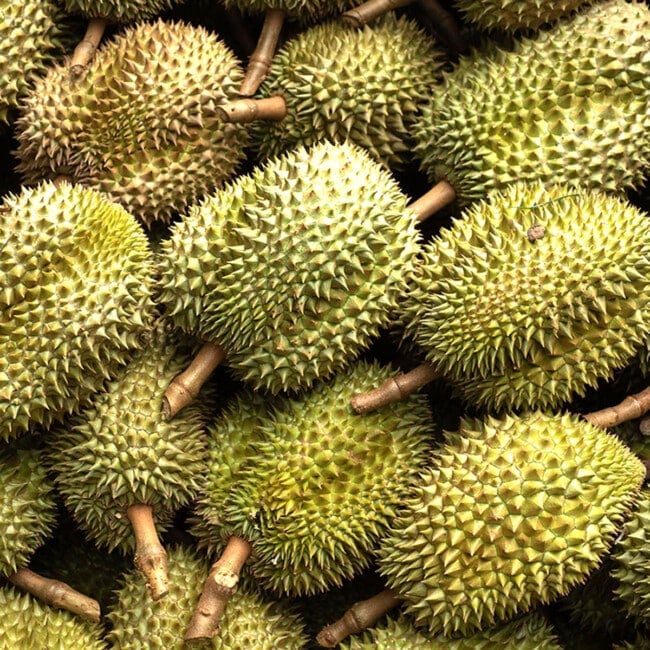
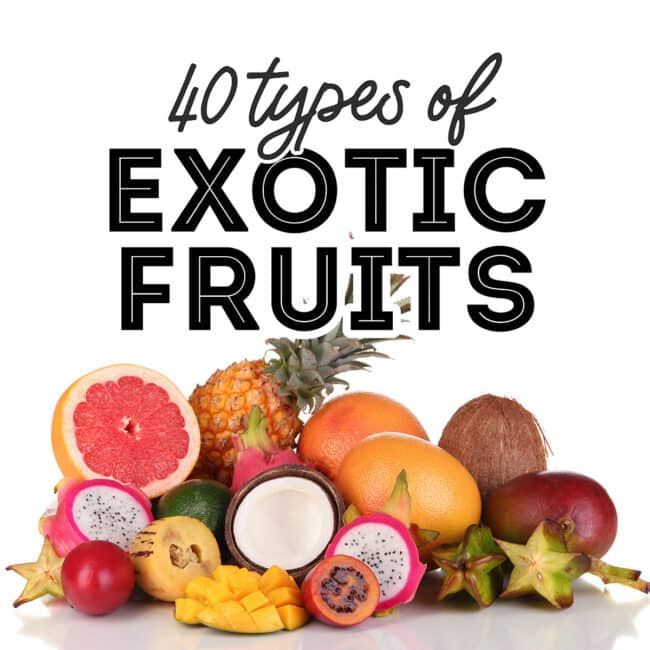

Leave a Comment